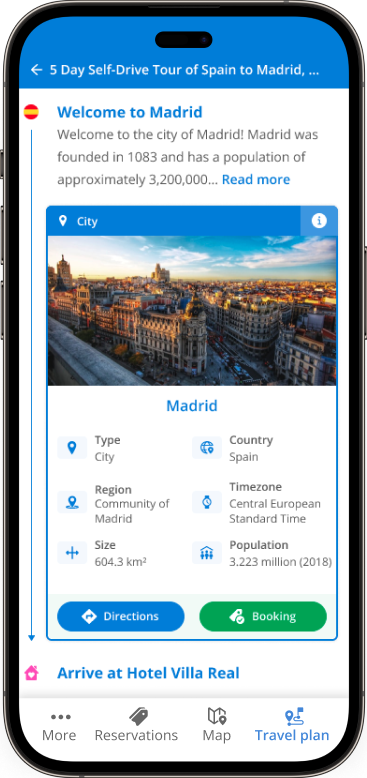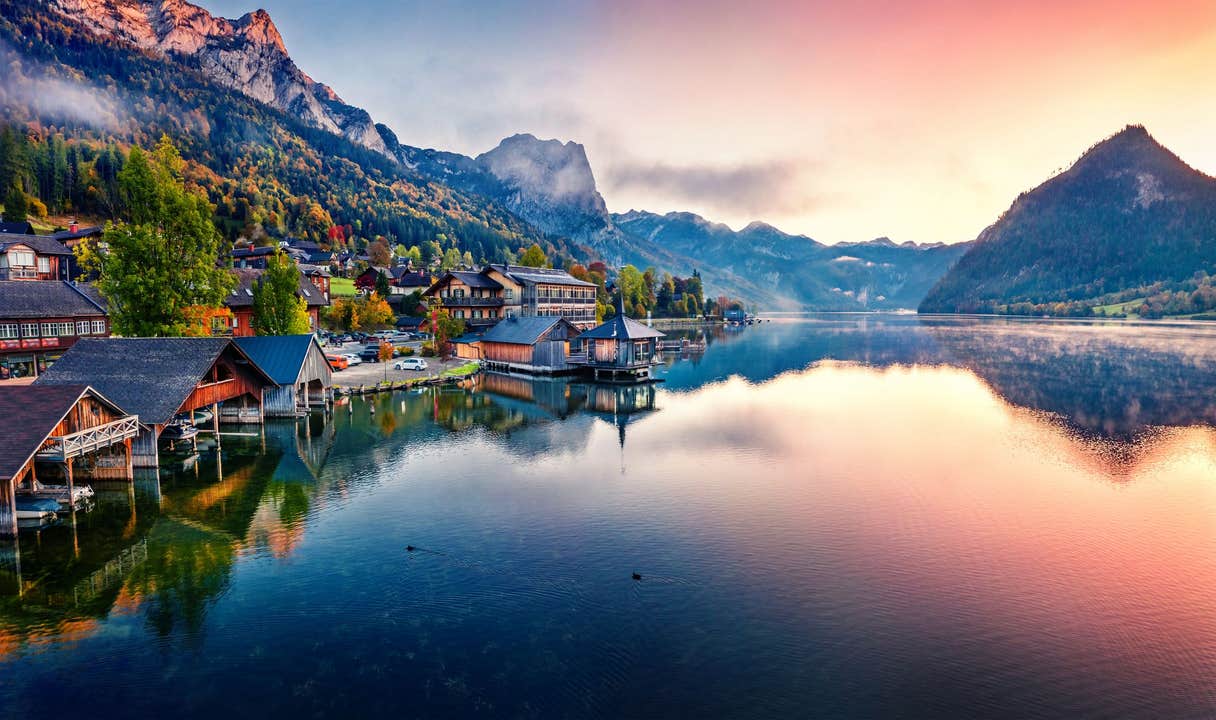
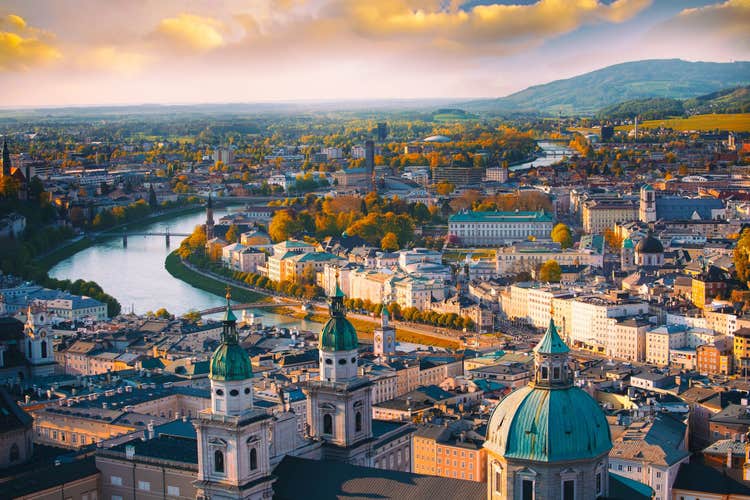

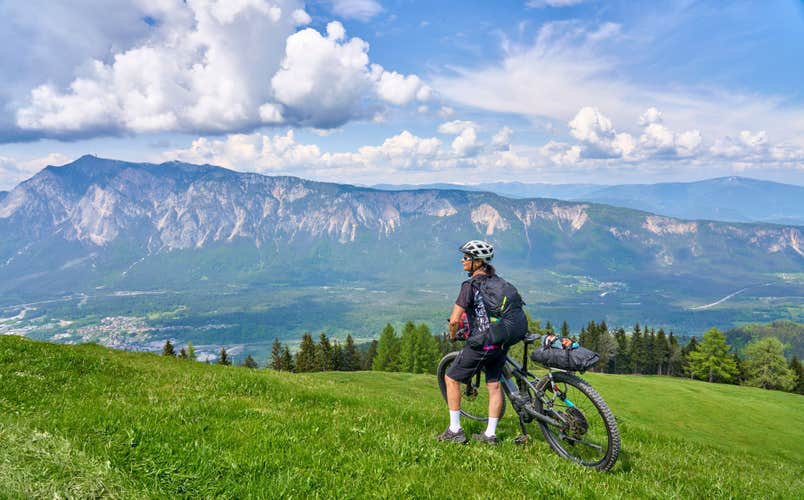
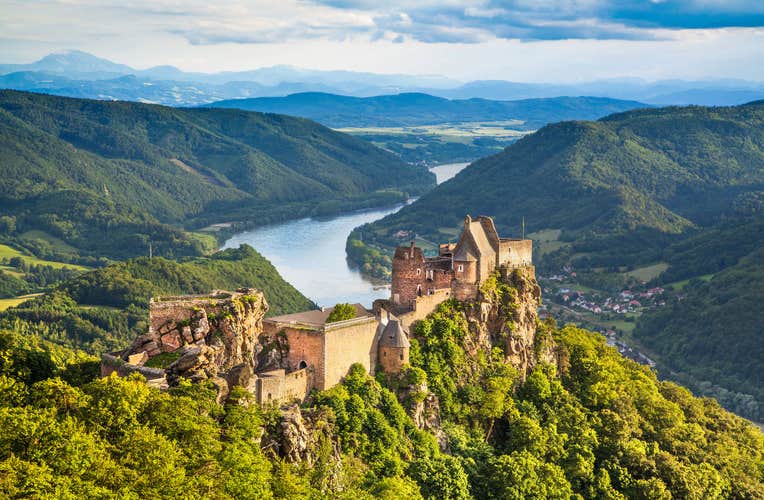
Find the best time to visit Austria and transform an ordinary journey into an extraordinary adventure. Learn the ideal seasons to see Hohensalzburg Fortress in Salzburg or go skiing in the Austrian Alps for the best Austrian adventure. Let this guide be your compass as you navigate Austria's seasons all year round.
Each season in Austria paints a unique picture of the country’s stunning landscapes. From the snow-capped Alps in winter to Vienna’s bustling streets and blooming gardens in spring, every moment ensures a memorable trip. Renting a car in Austria can provide flexibility to explore scenic routes at your own pace, especially in spring and summer.
Discover the best time to visit Austria and immerse yourself in its world-class experience. Enjoy the Salzburg Festival in summer, explore Mozartplatz in autumn, or choose from the best travel packages in Austria for a winter getaway in the Alps.
Learn perfect timing and tailor your trip to your preferences to create unforgettable memories on your visit to this alpine paradise. Don’t forget to plan your flights to Austria in advance to make your journey smooth and stress-free.
When Is The Best Time To Visit Austria

The best time to visit Austria is during its shoulder seasons, spring and fall. Spring in Austria runs between April and June, while fall runs between September and October. Its shoulder months are ideal for visiting Salzburg and Vienna when crowds are smaller.
The months of spring and fall are also perfect for a variety of activities in Austria. Go on walking and sightseeing experiences, hike the scenic Alps, or sip wine during a Wachau Valley vineyard tour. No matter when you visit Austria, there’s something to look forward to.
Things To Consider Before Visiting Austria

In general, the best time to go to Austria is in spring and fall because of the favorable weather and smaller crowds. However, you should also know that the perfect time to go also depends on what you want to experience.
Before you start packing your bag, there are several factors to consider when planning your visit to this European gem. Here's a checklist to help you figure out the best time to go to Austria.
Weather preferences: Austria experiences diverse climates year-round. Do you want to enjoy the mild spring in Vienna, the cool fall months of Salzburg, or the snowy winter of the Alps?
Crowd levels: Crowd levels can influence how enjoyable your trip is. Austria's shoulder months of April to June, and September to October typically have smaller crowds. Meanwhile, summer's favorable weather normally brings more visitors to the country.
Budget considerations: The cost of flights, accommodation, and activities can usually spike during summer. Meanwhile, ski destinations like Innsbruck and Zell am See can be expensive during the winter ski season. The cheapest time to visit Austria is from September 10 to December 9.
Preferred destinations: Austria has a lot of top cities, and your activities and their timing usually depend on the destination. Vienna is famous for exploring stunning buildings like the Schonbrunn Palace, Salzburg for its musicality, and Innsbruck for its ski areas.
Seasonal activities and events: What top activities in Austria do you want to experience during your visit? Winter is typically perfect for skiing, spring for outdoor activities and exploration, summer for walking tours and music festivals, and autumn for wine tasting.
Transportation options and accessibility: Public transportation options are open year-round in Austria. However, during late spring to early autumn, when the weather is favorable for road trips in Austria, you may consider car rentals for exploring beyond the cities.
Duration of your visit: Decide on the duration of your stay in Austria. Are you thinking of a short 3-day weekend getaway in Austria's Vienna? Or, a longer 7-day self-drive road trip across Austria? Your trip's length can influence the activities and places you choose to visit.
The Best Time To Visit Austria: Seasonal Guide

Austria experiences four distinct seasons: spring, summer, autumn, and winter. Each season comes a variety of activities to enjoy, from exploring alpine meadows in spring to skiing in winter.
Choosing the best season to visit Austria is a personal decision. By understanding the characteristics of each season, you can make an informed choice based on your preferences.
Learn more about each season to set your expectations and plan your getaway accordingly. Know the best time to visit Austria by reading more below.
Spring in Austria: Pleasant Temperature
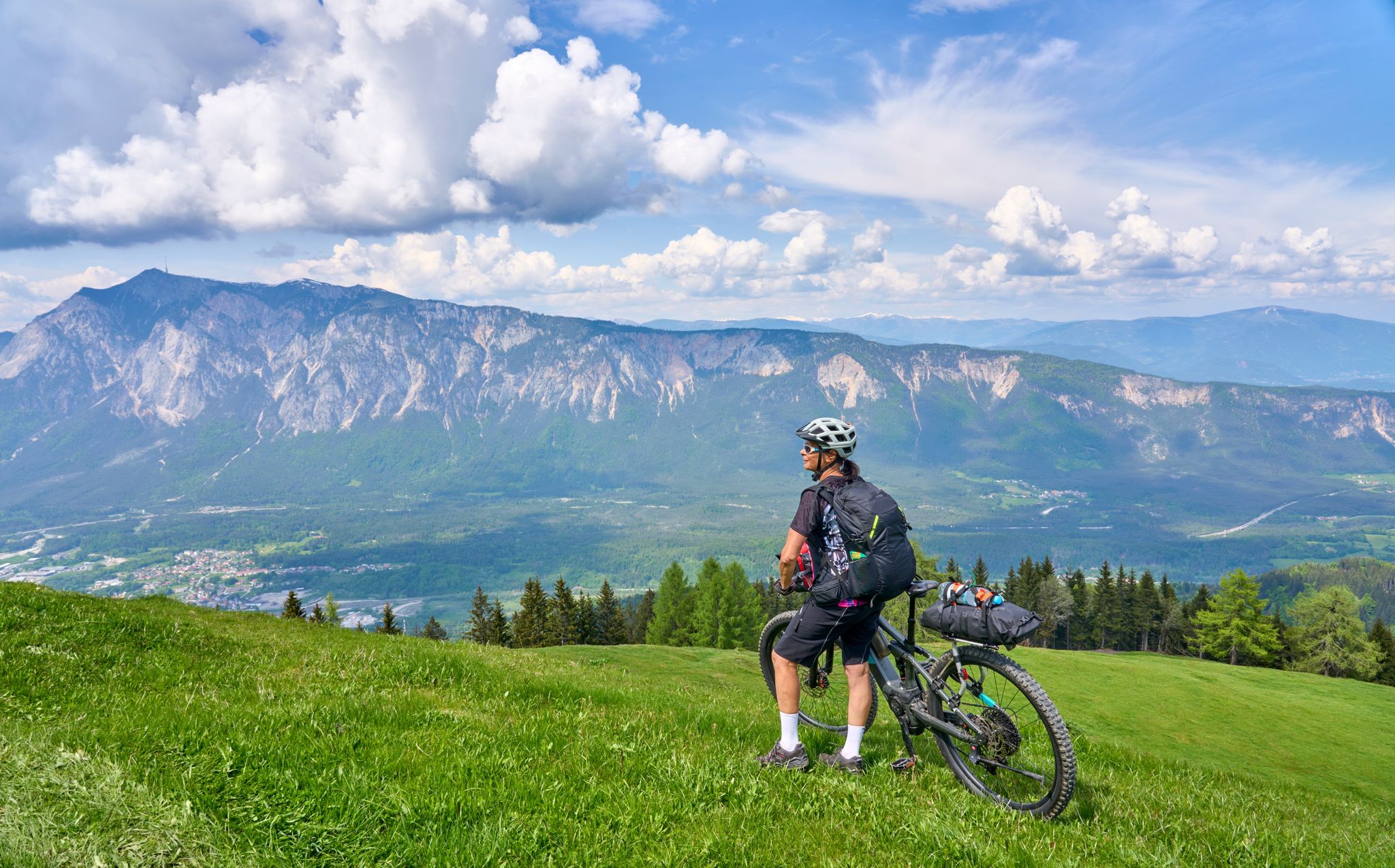
Spring in Austria, from April to June, marks the transition from the chill of winter to the warmth of summer. It's considered the best time to visit Austria for pleasant temperatures and fewer crowds compared to the peak summer months.
As the snow melts, lush green meadows and majestic mountains emerge. Meanwhile, the countryside comes alive with edelweiss and alpine roses. The weather is perfect for savoring local delicacies like apfelstrudel and wiener schnitzel in outdoor cafes. Outdoor activities like cycling and biking are also popular.
Join hiking tours in Vienna or visit historic sites like the Schonbrunn Palace. The charming villages in Tyrol offer a glimpse into traditional Austrian life.
Austria's Weather Conditions in Spring
- Weather in spring in Austria range from mild to warm
- Spring tempereature is typically between 50 F and 68 F (10 C and 20 C).
- While spring showers are common, they contribute to the lush greenery and colorful flora.
Austria's Ideal Activities in Spring
The lovely weather that spring brings is the best time to visit Austria for outdoor activities and exploring scenic landscapes. You can:
- Hike in the Alps,
- Visit botanical gardens and parks
- Participate in lively cultural events and festivals, such as the Salzburg Easter Festival in April and the Vienna Festival in May
Expert Tips for Spring in Austria
Here are some useful tips when you visit Austria in spring:
- Pack layers to adapt to fluctuating temperatures
- Keep an umbrella or raincoat handy for occasional showers
- Join guided day trips in Salzburg or nature walks in Vienna led by knowledgeable locals for an immersive experience
Summer In Austria: Warm Weather
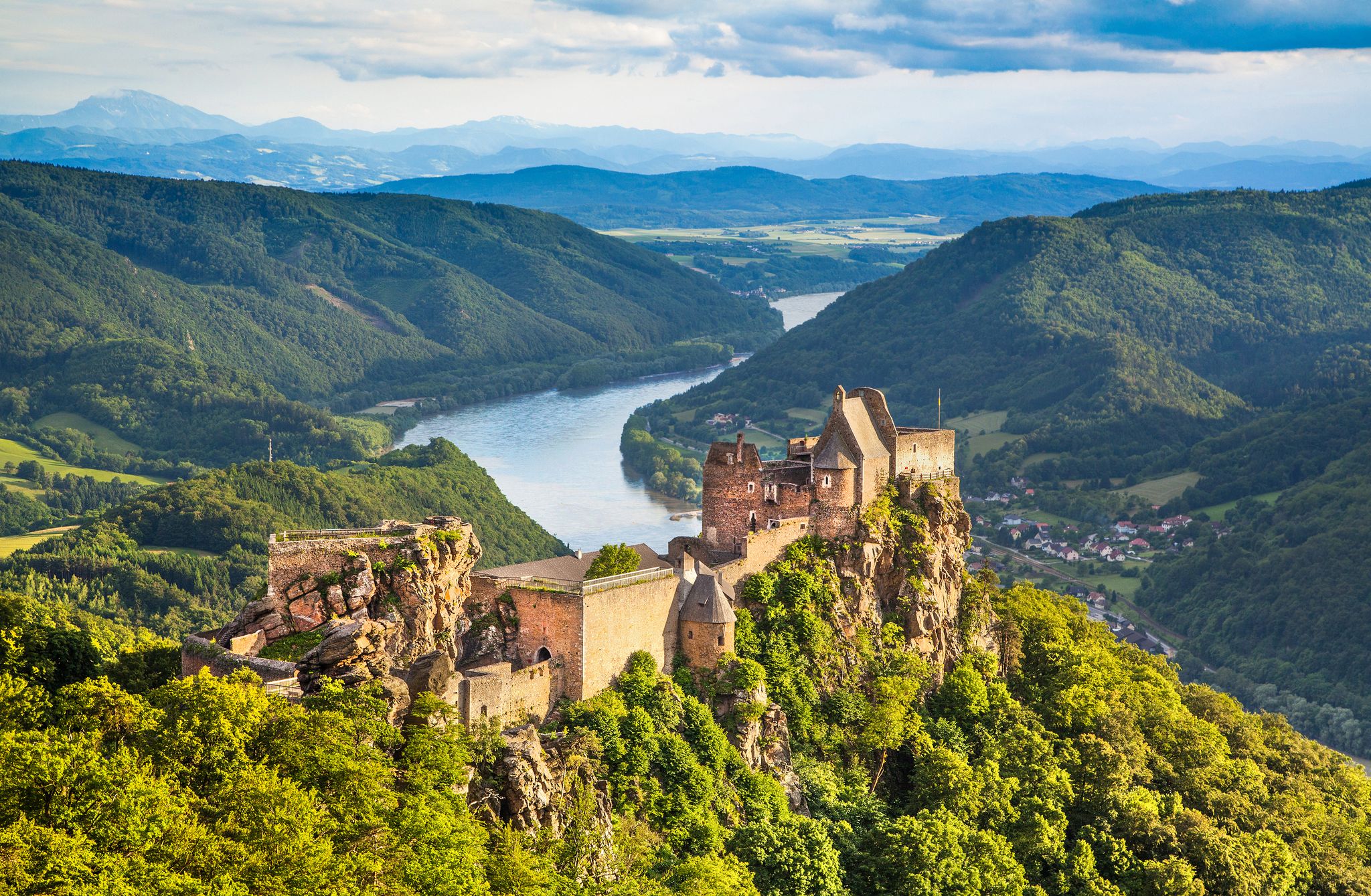
Summer in Austria, from June to August, welcomes warm weather, longer daylight hours, and a buzzing atmosphere. It's the best time to visit Austria for ideal weather, temperature, and festive atmosphere. Summer is also the peak season for sightseeing and hiking.
Expect larger crowds and higher prices, particularly in popular tourist destinations such as Vienna, Salzburg, and Innsbruck.
With extended daylight and warm temperatures, it's perfect for hiking adventures in the Alps. Visitors can explore scenic trails in Hohe Tauern National Park. It's also the best time to admire pristine lakes and lush forests, and spot wildlife like marmots and golden eagles.
This season is also brimming with lively festivals and cultural events like the Salzburg Festival and the Almabtrieb cattle drives.
Austria's Weather Conditions in Summer
- Summer's weather typically range from pleasantly warm to hot
- The temperature of Austria in summer ranges between 77 F and 86 F (25 C and 30 C)
- July and August are the warmest months and the best time to visit Austria for adventure tours in Salzburg.
Austria's Ideal Activities in Summer
Summer in Austria offers endless possibilities for adventure and cultural immersion. You can:
- Hike scenic trails in places like the Salzkammergut Lake District
- Cool off in crystal-clear mountain lakes such as Lake Achensee or Lake Wolfgangsee.
- Attend music festivals like the Salzburg Festival and visit historic sites like the Hohensalzburg Fortress
Expert Tips for Summer in Austria
Here are some useful tips when you visit Austria in summer:
- Plan and book accommodations and activities three to six months in advance, if you're heading to popular tourist destinations like Salzburg or Innsbruck
- Consider exploring lesser-known regions like Styria or Carinthia to escape the crowd
Fall in Austria: Crisp Air
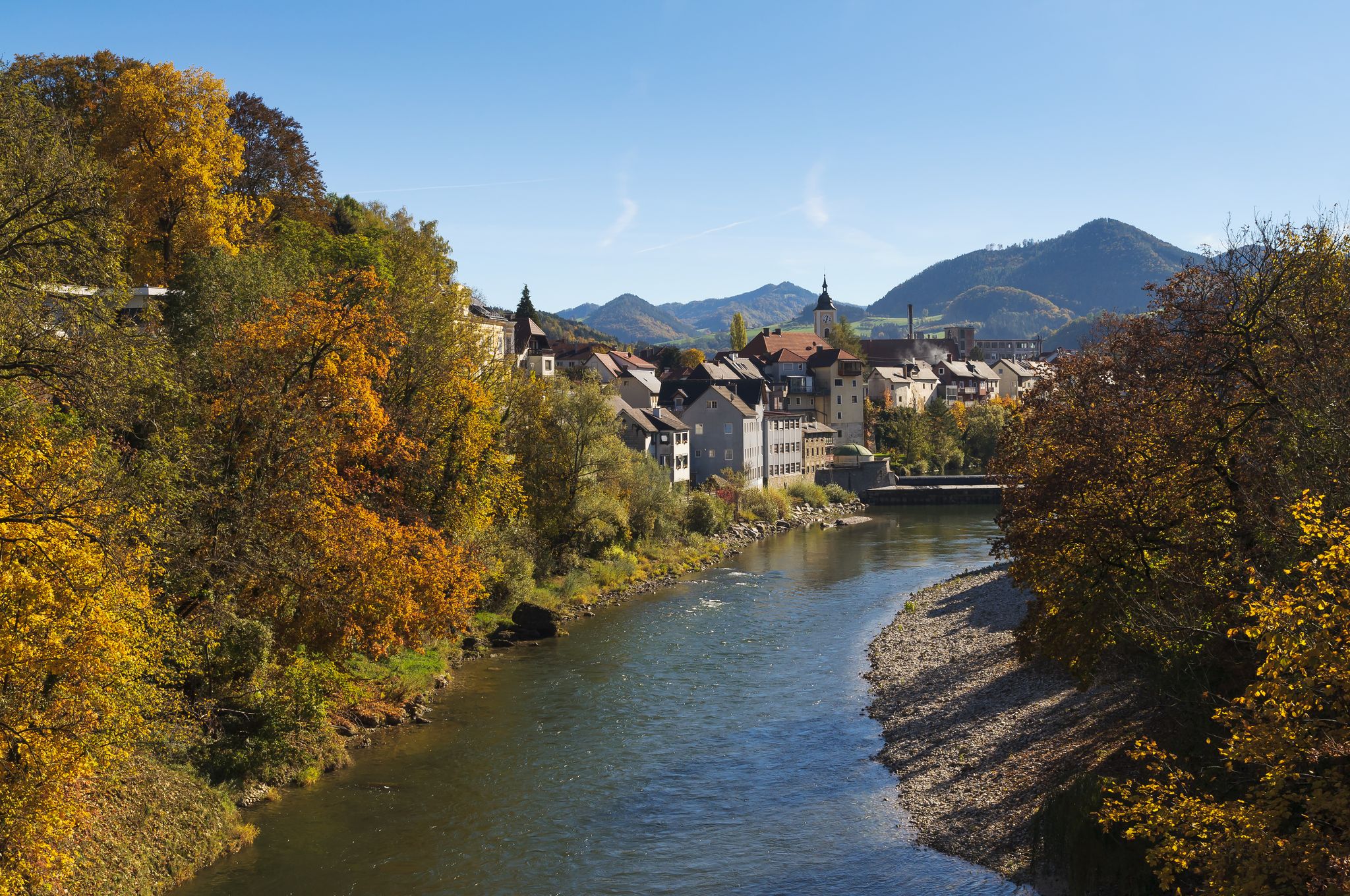
Autumn in Austria, spanning from September to November, offers warm hues and crisp air, creating a picturesque setting for travelers. Fall is often regarded as the best time to visit Austria due to its moderate temperatures. There's also fewer crowds compared to the bustling summer season.
As autumn arrives, Austria's landscapes transform with bright colors. Charming villages host harvest festivals where you can taste local wines and dishes.
The comfortable weather is ideal for exploring historic sites like Hofburg Palace and the Hellbrunn Palace and enjoying Austrian cuisine in markets and rustic taverns.
Austria's Weather Conditions in Fall
- Fall in Austria brings gradual cooling, as it transitions from summer to fall to winter
- Austria's temperature in fall ranges from 50 F to 68 F (10 C to 20 C)
- September tends to be warmer, while October marks the arrival of cooler weather
Austria's Ideal Activities in Fall
Embrace the charm of fall by indulging in a range of activities:
- Go wine tasting in picturesque vineyards in the Wachau Valley
- Explore golden forests on hiking trails in Styria
- Immerse yourself in traditional harvest festivals like the Sudsteirischer Weinstrassen Genussherbst in Styria and the Kurbisfest in Retz
Expert Tips for Fall in Austria
Here are some useful tips when you visit Austria in fall:
- Layer your clothing to adapt to changing temperatures when visiting during autumn in Austria
- Seize the opportunity to savor seasonal delights like pumpkin soup, chestnut pastries, and hearty stews at autumnal festivals and markets
- Don't forget to sample regional wines such as Gruner Veltliner and Zweigelt, which perfectly complement the flavors of the season
Winter in Austria: Snowy Atmosphere
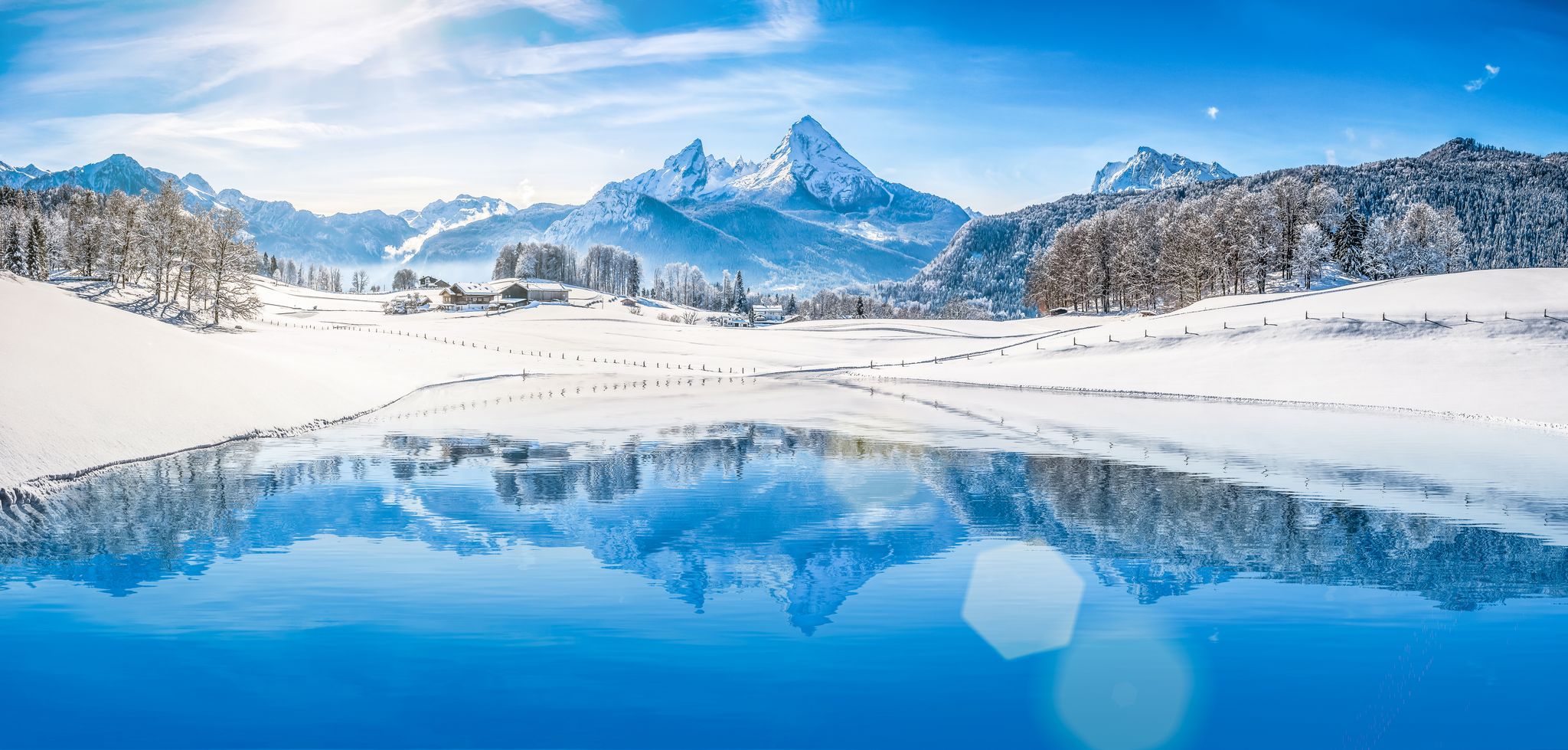
Winter is the best time to visit Austria for snow-capped landscapes and festive atmospheres. Spanning from December to February, it’s a peak season for snow enthusiasts and holidaymakers seeking magical experiences.
As snow covers the alpine regions, plenty of outdoor activities are available for everyone. You can go on ski trips in Schladming or ski and snowboard in famous resorts like Kitzbuhel. Enjoy ice-skating on frozen lakes and hiking through the snowy forests of the Tyrol region.
Austria's charming cities and towns like Innsbruck and Hallstatt host Christmas markets. Shop delicious seasonal treats and handmade gifts, and enjoy traditional celebrations.
Austria's Weather Conditions in Winter
- Winter in Austria brings cold temperatures, often dropping below 32 F (0 C)
- Snowfall is abundant, particularly in the alpine regions
- December to February are the prime months for winter activities, offering snowy landscapes for outdoor enthusiasts
Austria's Ideal Activities in Winter
Enjoy Austria's winter with these activities:
- Experience skiing in the world-renowned resorts of St. Anton and Kitzbuhel
- It's the best time to visit Austria and enjoy snowboarding in the Tyrolean Alps
- Snowshoe in the picturesque landscapes of Carinthia
- Dive into the festive spirit at the Vienna Christmas Market, experience traditional Advent events in Salzburg, or explore the cozy alpine village of Hallstatt
Expert Tips for Winter in Austria
Here are some useful tips when you visit Austria in winter:
- Bundle up in thermal layers, waterproof outerwear, and sturdy boots to stay warm and dry in the snow
- Plan a mix of indoor and outdoor activities to make the most of your winter getaway
- Secure accommodations near ski resorts and Christmas markets three to six months in advance
Best Time To Go to Austria for Specific Activities
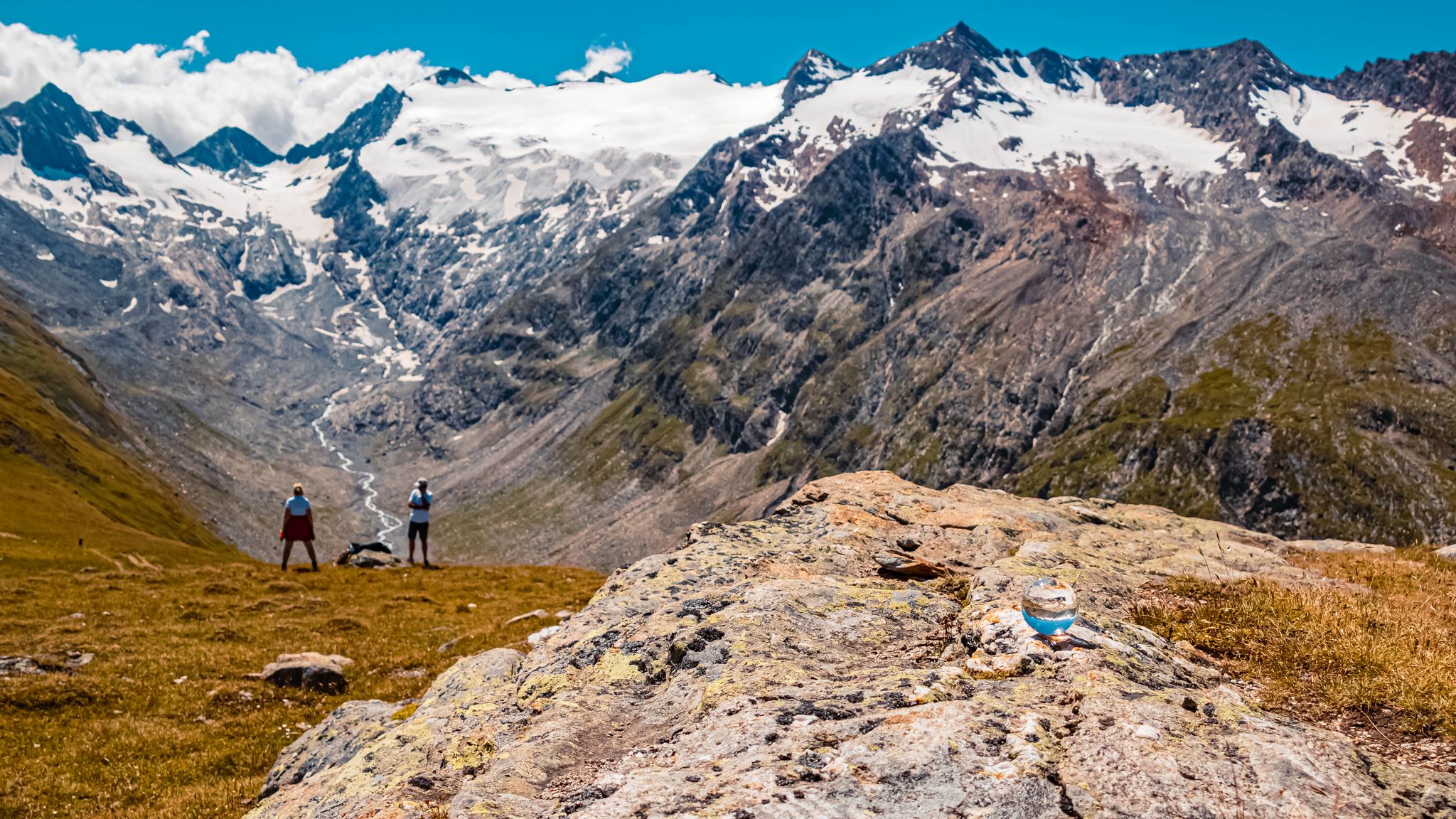
Austria offers a variety of activities throughout the year, from adventurous escapades to cultural immersions. Choosing the best time to visit Austria is more than just selecting the date; it's also about aligning your visit with what you want to do and experience.
Whether you're keen on exploring the alpine trails, savoring local wines, or attending classical music performances, Austria caters to diverse interests.
Best Time To Visit Austria for City Sightseeing

Generally, the best time to visit Austria for city sightseeing is during the fall season. Explore cities like Vienna, Salzburg, and Innsbruck with fewer crowds, cheaper stays, and pleasant weather.
Additionally, make the most of your city sightseeing in Austria by purchasing a city pass for discounted entry to multiple attractions and utilizing public transportation for convenient access. Don't forget to explore local markets and cafes to savor authentic Austrian cuisine and immerse yourself in the local culture.
If you want a deeper understanding of the best time to visit Austria's main cities and what they have to offer, read more below.
Vienna

The best months for city sightseeing tours in Vienna are typically April to June and September to October. During these times, you can immerse yourself in the grandeur of Schonbrunn Palace and explore the rich history of Hofburg Palace.
Visitors can also stroll the charming streets of the Old Town, visit the world-renowned Vienna State Opera, and experience the city's thriving cultural scene.
Salzburg
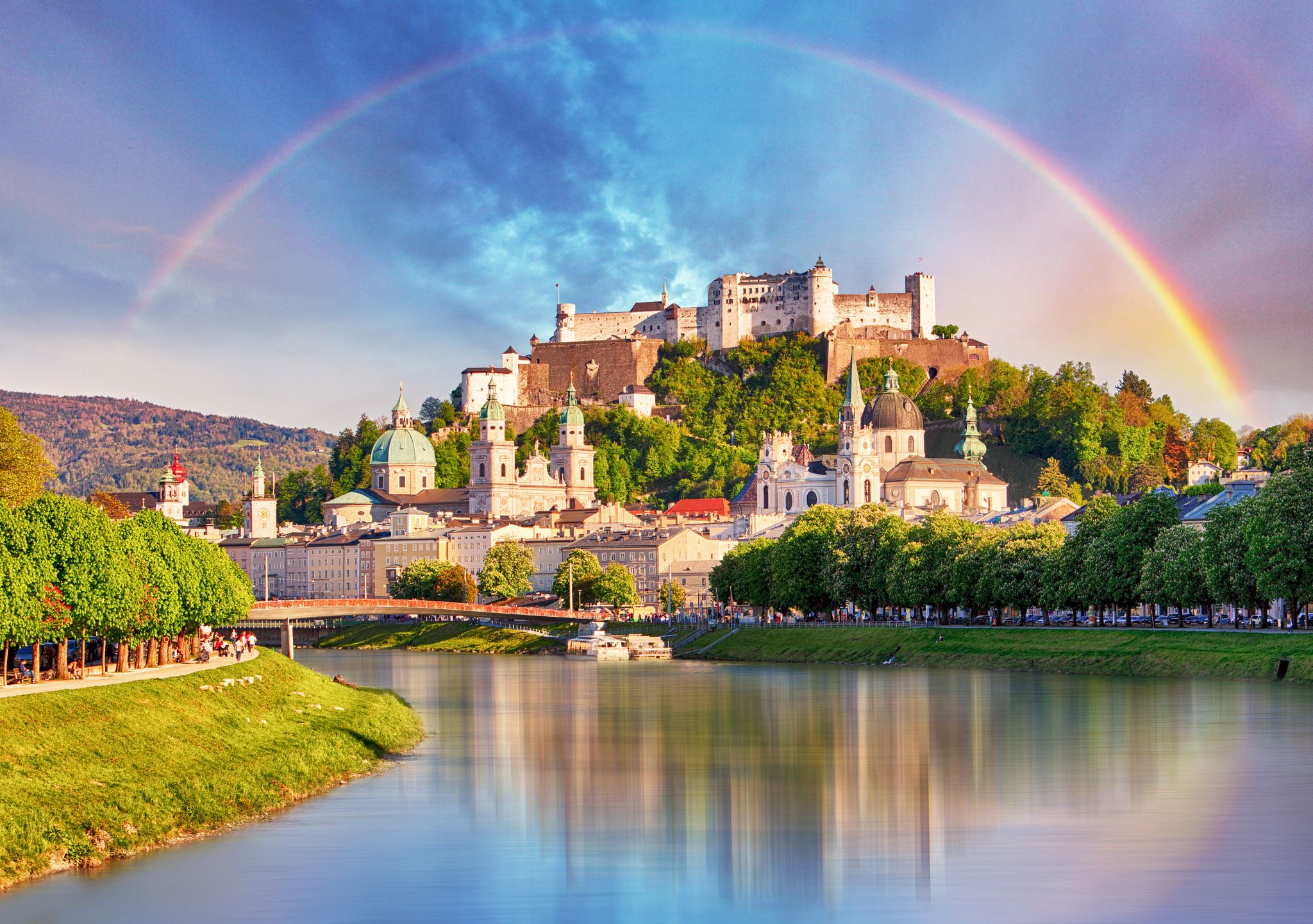
The ideal months for city sightseeing in Salzburg are May to June and September to October. Discover the birthplace of Mozart and explore Mozartplatz. See the iconic Hohensalzburg Fortress, one of the largest medieval castles in Europe. Don't miss the opportunity to wander through the picturesque Mirabell Gardens and enjoy panoramic views of the city from the Fortress.
Innsbruck

The best time to visit Austria to explore Innsbruck is between May to June and September to October. Visitors can explore the historic Old Town and admire stunning architecture or take a scenic ride on the Nordkette Cable Car for breathtaking views of the surrounding Alps. You can also explore the Imperial Palace and visit the Swarovski Crystal Worlds for a unique artistic experience.
Best Time To Visit Austria for Outdoor Adventures
Austria provides abundant opportunities for outdoor enthusiasts and adventurers. Generally, the best time to go to Austria for most outdoor activities is from summer to fall. For skiing, in winter, from December to March.
The country boasts breathtaking natural landscapes consisting of lakes, mountains, steppes, forests, and hills. Whether you enjoy hiking, cycling, skiing, birdwatching, or water activities in Austria, there’s something for your preferences year-round.
Learn more about specific activities and the best time to enjoy them below.
Best Time To Go Hiking in the Austrian Alps
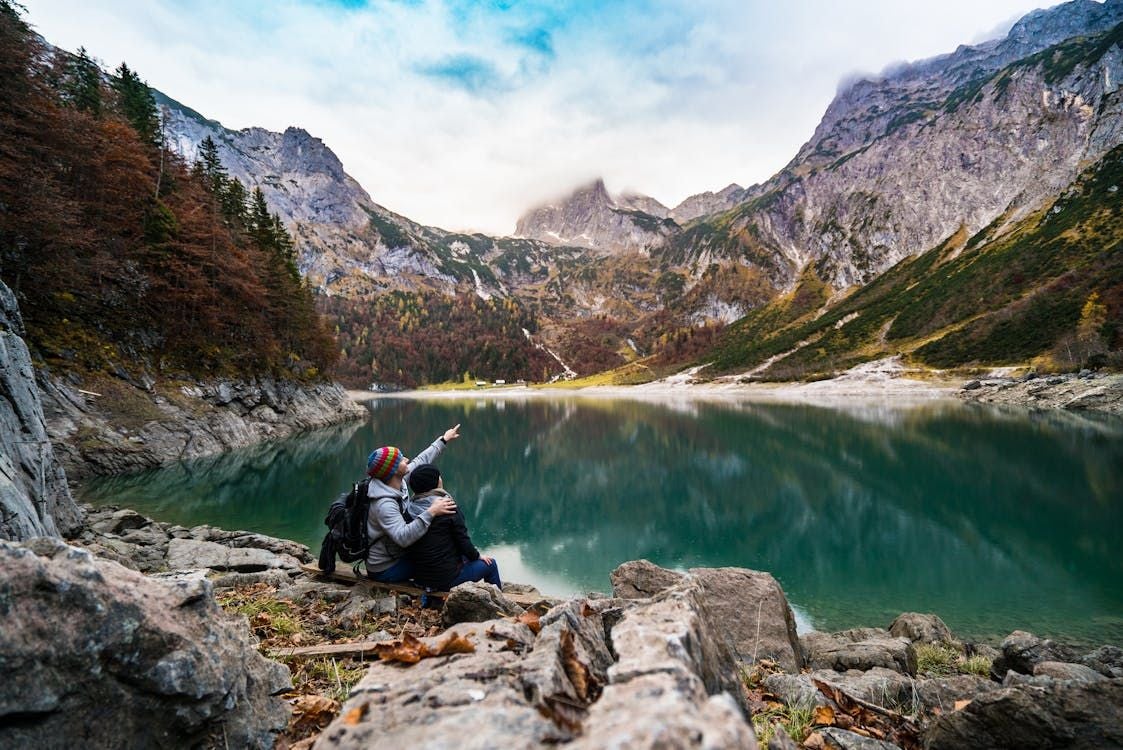
The best time to visit Austria for hiking in the Austrian Alps is from June to September. Weather conditions are most favorable during the peak summer season. Trails are accessible, offering a wide range of options suitable for all skill levels and interests. You can choose from challenging alpine routes to serene valley walks, each providing unique views and experiences.
The Tyrol region boasts iconic trails like the Eagle's Walk, renowned for its stunning views and rugged terrain. Alternatively, the idyllic valleys of Salzkammergut boast trails through picturesque landscapes, shimmering lakes, and charming villages.
Before setting out on hiking in the Austrian Alps, it's crucial to check trail conditions and weather forecasts for a safe and enjoyable experience. Guided day trips in Austria led by experienced professionals offer valuable insights into local flora, fauna, and culture, enriching your adventure.
Best Time To Visit Austria for Water Sports on Austrian Lakes
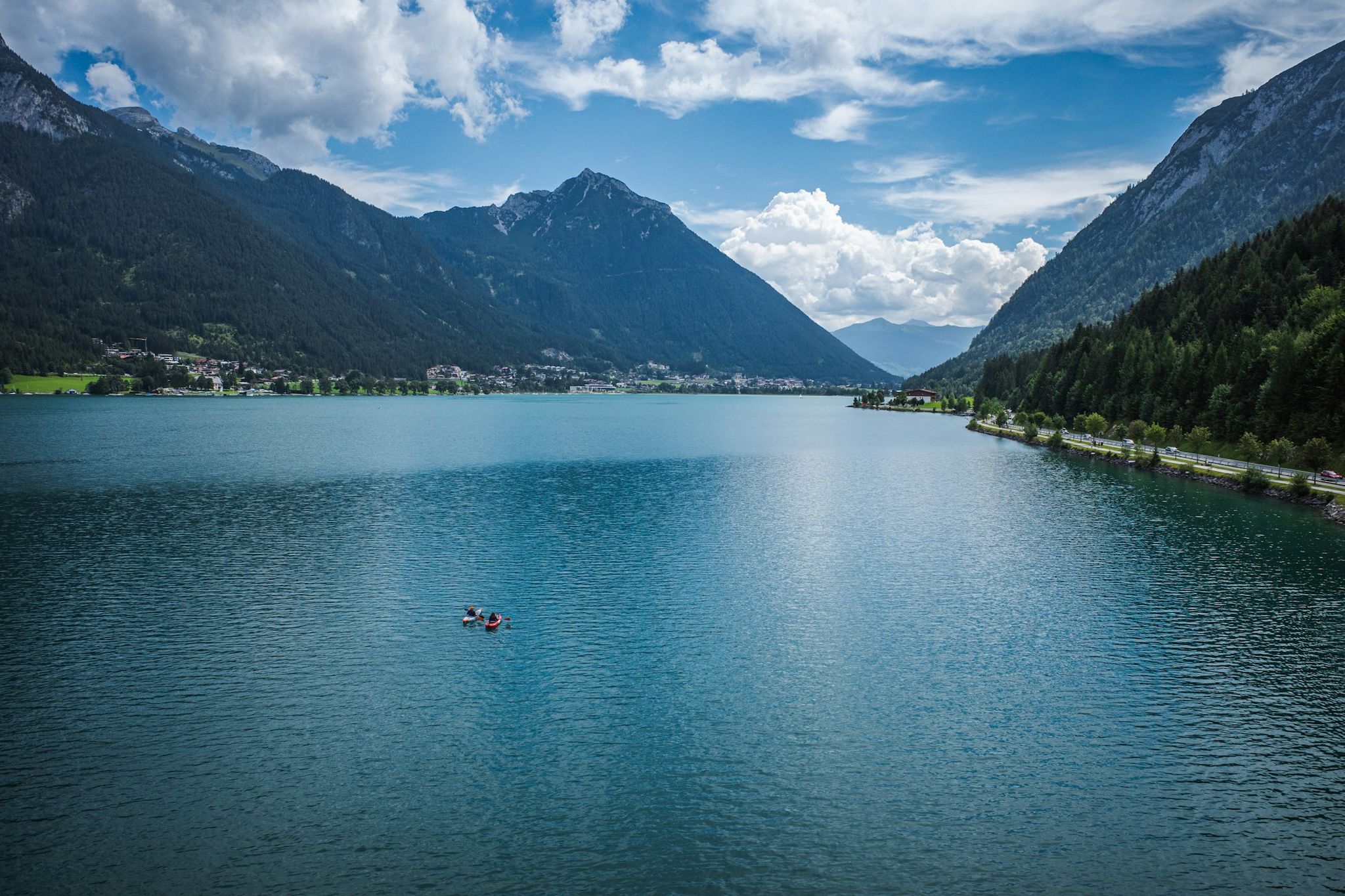
The best time to visit Austria for water sports on Austrian lakes is from June to August when temperatures are warm, and the weather is ideal for outdoor activities. During this period, lakes like Wolfgangsee, Hallstatter See, and Neusiedler See invite water sports enthusiasts with their pristine waters and stunning surroundings.
From swimming and sailing to kayaking and paddleboarding, these lakes offer plenty of aquatic adventures for all skill levels. To make the most of your water sports experience, it's advisable to rent watercraft and equipment in advance, especially during peak season when demand is high.
Additionally, you can explore lakeside villages such as Hallstatt, St. Wolfgang, and Rust. Discover the charming accommodations and dining options available in these villages, adding to the overall enjoyment of your lakeside getaway.
Best Time To Visit Austria for Skiing
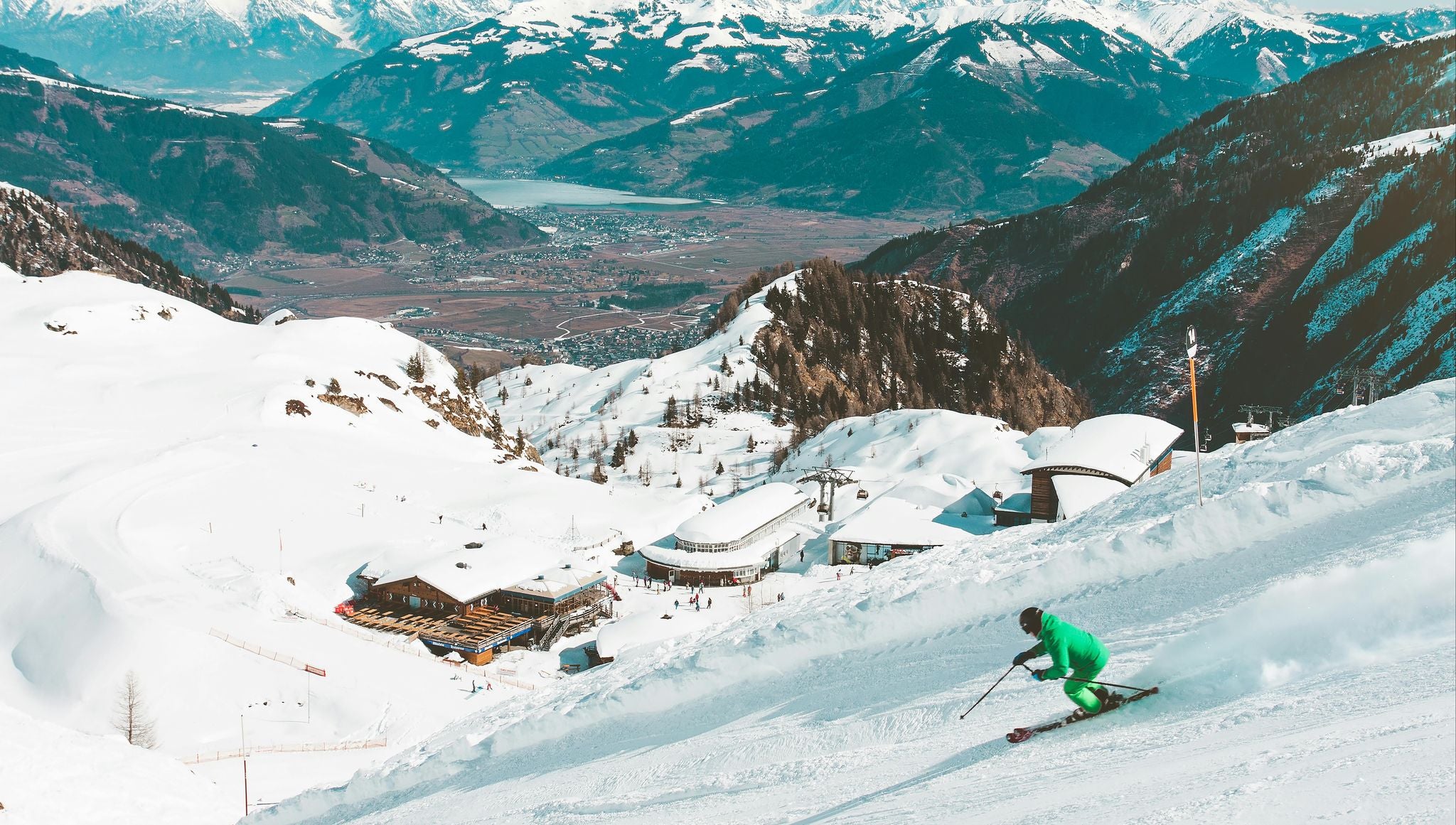
The best time to visit Austria to experience skiing is from December to March. During these months, the country transforms into a winter wonderland. Meanwhile, ski resorts and the snow quality are at their best.
If you prefer to ski with fewer crowds, you can still ski from mid-March to April. Plus, during these months, the weather starts to warm up.
Check out ski trips to Zell am See and other world-class ski resorts like St. Anton and Ischg. They offer unparalleled opportunities for skiing, snowboarding, and other winter sports.
Book accommodations in ski-in/ski-out establishments three to six months in advance if you're visiting in winter. For the least hassle, consider booking a ski trip package in Austria. These bundles often include accommodations, expertly curated itineraries, and access to the best tours in Austria.
Best Time To Go to Austria for its Christmas Markets and Balls

The best time to visit Austria for its Christmas markets and balls is in winter. For Christmas markets, visit in December. Balls usually start in late November to February in winter.
Austria's Christmas markets let you browse traditional handicrafts, indulge in seasonal delicacies, and enjoy live music and entertainment. Visitors can sample regional specialties like Gluhwein (mulled wine), Kaiserschmarrn (shredded pancake), and Lebkuchen (spiced gingerbread) at these Christmas markets.
For a taste of Viennese elegance, you can attend one of Vienna's legendary balls, such as the Vienna Opera Ball or the Kaffeesiederball.
Best Time To Go to Austria for Cycling
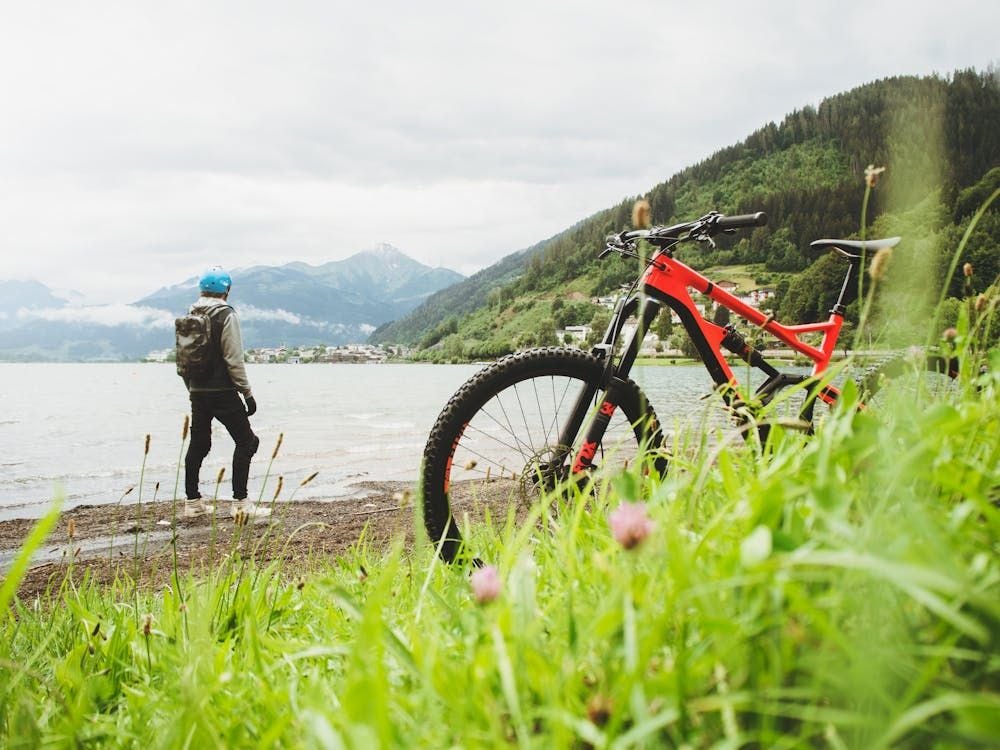
Cycling in Austria offers a perfect blend of outdoor exploration, cultural immersion, and memorable moments for enthusiasts of all levels. April to October marks the best time to visit Austria for cycling adventures. During these months, the country experiences pleasant weather and longer daylight hours ideal for exploring picturesque landscapes.
Embark on cycling journeys along renowned routes like the Danube Cycle Path, Tauern Cycle Path, and Lake Constance Cycle Path. These routes offer well-maintained trails and breathtaking scenery.
To make the most of your cycling adventure, consider renting bicycles from local vendors or bringing your own. Pack essentials such as water, snacks, and a repair kit for a smooth ride. Don't forget to take breaks along the way to soak in the scenic beauty and explore cultural attractions, charming cafes, and historic landmarks.
Best Time for Birdwatching in Austria
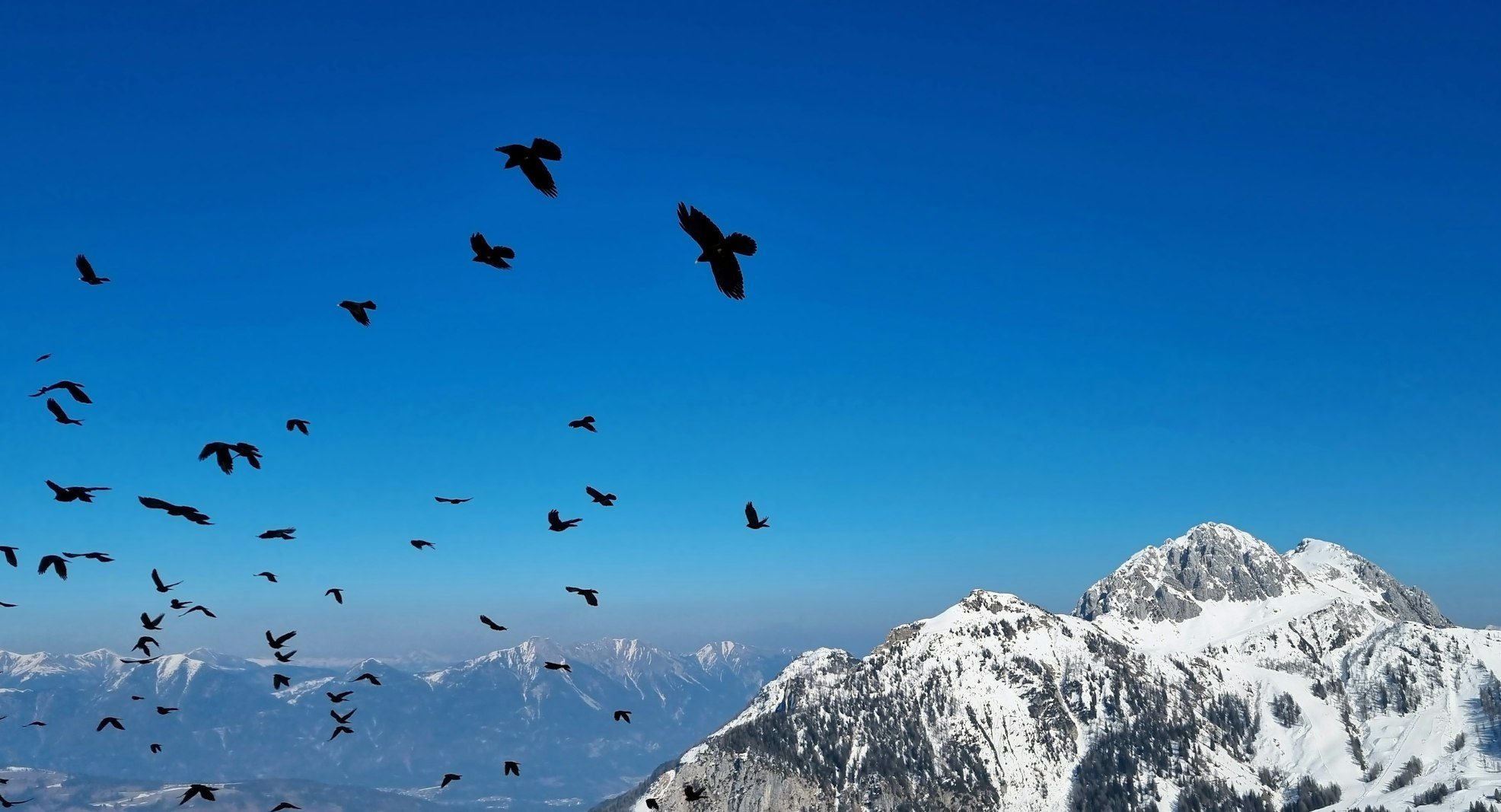
The best times for birdwatching in Austria are typically from March to May in spring and from September to November in fall. During these months, bird enthusiasts have the opportunity to witness a diverse array of species, like the Eurasian wryneck, as they migrate through the country. These periods are also considered the best time to visit Austria for nature lovers.
Explore the country's rich avian biodiversity in designated birdwatching hotspots such as the National Park Neusiedler See-Seewinkel, Donau-Auen National Park, and Gesause National Park. These protected areas provide essential habitats for a wide range of bird species, from waterfowl and raptors to songbirds and migratory species.
For a better birdwatching experience, bring binoculars and a field guide to help identify different bird species and learn about their behaviors and habitats. Also, guided tours led by experienced naturalists can provide expert insights and take you to the best viewing spots.
Best Time To Visit Austria for Cultural Experiences
Austria's rich cultural heritage and vibrant arts scene make it a year-round destination for cultural enthusiasts. Each time of the year offers unique opportunities to immerse yourself in the country's cultural treasures.
The best time to visit Austria for cultural experiences depends on your interests—whether it's art, music, food, or local festivals, there’s always something happening throughout the year.
Best Time for Tastings and Wine Tours in Austria
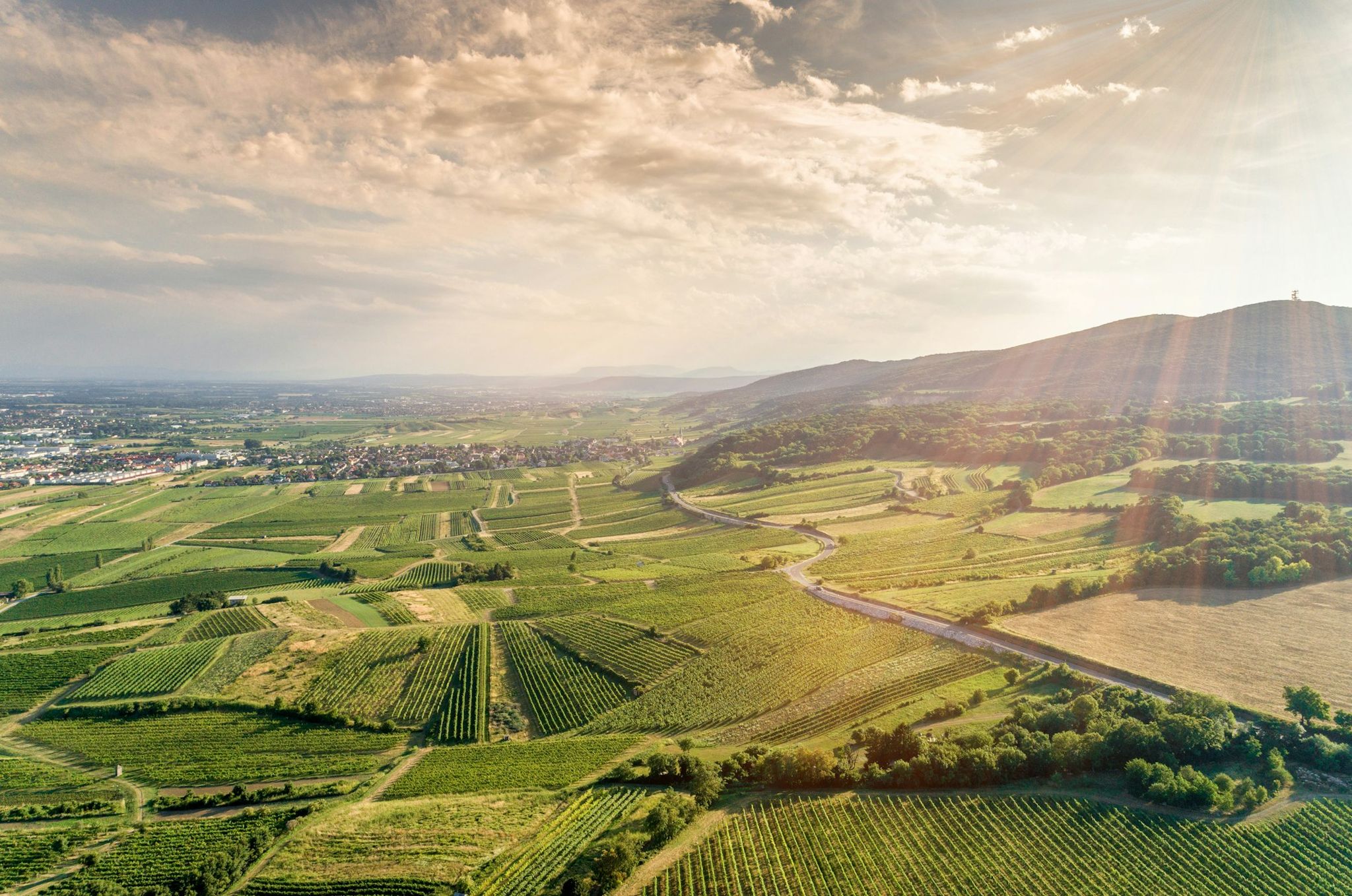
For wine enthusiasts, the best time to visit Austria is from September to October, coinciding with the grape harvest season. The picturesque Wachau Valley, the sunny vineyards of Burgenland, and the rolling hills of Styria are bustling with activity as winemakers harvest their grapes.
Guided wine tours in Austria during this period offer a deeper understanding of local winemaking traditions. Visitors can also sample a wide variety of wines directly from the source. These tours often include visits to family-owned vineyards where you can witness the winemaking process from grape to bottle.
In addition to wine tasting in Austria, exploring the culinary scene of the country's wine regions is a must-do experience. Pairing local wines with regional dishes enhances the flavors and provides a comprehensive gastronomic journey. Consider joining a countryside half-day wine tour near Vienna for a delightful experience with wine tasting and a traditional Austrian lunch.
Best Time To Visit Austria for Classical Music Concerts

Austria is renowned for its classical music heritage, drawing enthusiasts from around the world year-round. In cities like Vienna, Salzburg, and others, you can fully immerse yourself in timeless melodies by attending classical music concerts.
Prestigious venues such as the Vienna State Opera, Musikverein, and Mozarteum host performances by top orchestras and conductors. The best time to visit Austria for classical music is during the concert seasons and festivals, such as the Vienna Philharmonic's New Year's Concert or the Salzburg Festival.
To make the most of these enchanting performances, it's wise to check schedules and book tickets early, especially during peak seasons and festivals. Dressing appropriately for the occasion adds to the experience, reflecting respect for the music and the venue's ambiance. Make sure to arrive ahead of time to fully appreciate the venue's grandeur, partake in pre-concert events, and perhaps enjoy a glass of champagne or Viennese coffee.
Best Time To Go to Austria for Culinary Tours

The best time to visit Austria for culinary delights is during seasonal food festivals and harvest times, which mostly happen in autumn. However, note that any time of the year is also a good time to visit Austria for its food. Throughout the year, there are many city food tours travelers can join in.
Austria's culinary scene offers a delightful journey for food enthusiasts throughout the year. From the bustling Naschmarkt in Vienna to the traditional taverns (Gasthofe) of Salzburg and the innovative eateries of Graz, there's something to tantalize every palate.
To fully explore Austria's culinary delights, you can join guided food tours in Vienna led by knowledgeable guides. These tours provide insight into local markets, introduce you to regional specialties, and shed light on Austria's rich culinary heritage. Be sure to indulge in signature dishes like Wiener Schnitzel, Sachertorte, and Apfelstrudel for an authentic taste of Austrian cuisine.
Best Time To Visit Austria for Art Galleries and Museums

The best time to visit Austria for an enriching museum experience is during the off-peak seasons, in spring, or in fall. These seasons offer fewer crowds and more comfortable weather.
Art galleries and museums in Austria offer a captivating journey through the country's rich cultural heritage, and they are accessible year-round. Austrian museums like the Heeresgeschichtliches Museum and the Kunsthistorisches Museum in Vienna provide opportunities to explore masterpieces spanning centuries of artistic achievement.
To make the most of your museum visits, consider planning them during weekdays to avoid crowds and enjoy a more immersive experience. Keep an eye out for special exhibitions and events, which often provide unique insights into the country's art and history.
Additionally, purchasing combination tickets for multiple attractions can help you save money while expanding your cultural exploration.
7 Local Festivals and Events in Austria You Should Visit
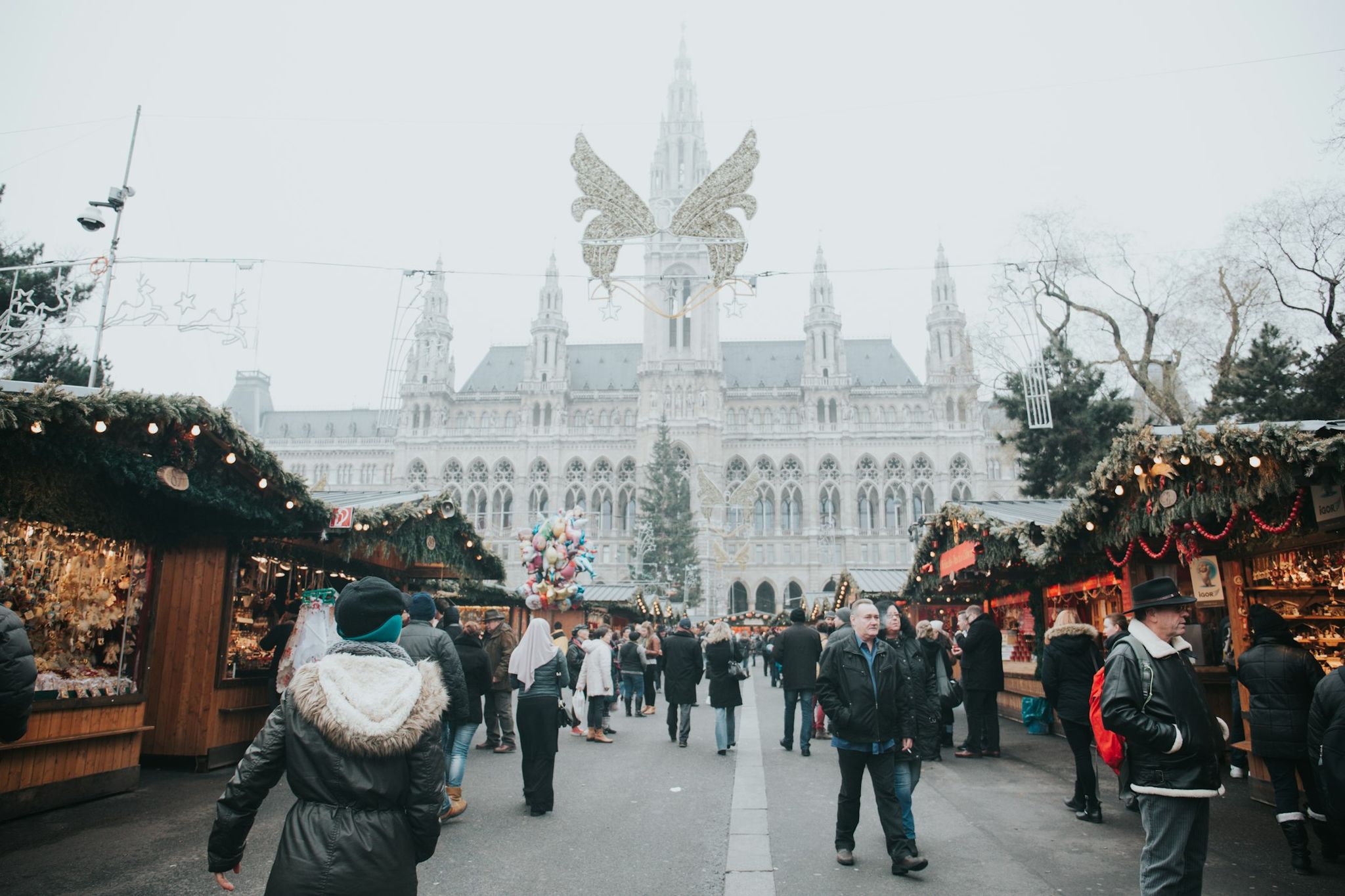
Austria's calendar is filled with lively festivals and events that showcase its culture, and these celebrations occur year-round. The best time to visit Austria to experience these cultural highlights depends on your interests and the specific events you wish to attend. Here are some key highlights:
- Vienna Opera Ball (February): Witness the splendor and elegance of Austria's most prestigious ball at the Vienna State Opera House.
- Innsbruck's New Orleans Festival (June): Celebrate the rich culture of New Orleans with live jazz music, Cajun cuisine, and colorful parades in the heart of Innsbruck.
- Salzburg Festival (July-August): Celebrate the legacy of Mozart and other classical composers with world-class opera, theater, and concerts in the historic city of Salzburg.
- Steirischer Herbst (September): Immerse yourself in avant-garde art, music, and performance at the Steirischer Herbst festival, showcasing cutting-edge contemporary works in Graz and across Styria.
- Vienna International Film Festival (October): Experience the magic of cinema with a curated selection of international films and premieres at various venues across Vienna.
- Christmas markets (December): Indulge in the festive spirit at enchanting Christmas markets in Vienna, Salzburg, and other cities, offering artisanal crafts, seasonal delicacies, and mulled wine.
- New Year's Concert (January 1): Ring in the New Year with a spectacular concert by the Vienna Philharmonic Orchestra, broadcast to millions of viewers worldwide.
To figure out the best time to visit Austria and make the most of these cultural experiences, it's essential to research festival dates and locations in advance. Arriving early ensures you can secure the best viewpoints for parades, performances, and other cultural celebrations.
Don't hesitate to participate in local customs and traditions. Enrich your experience and connect more deeply with Austrian culture.
Best Time To Visit Austria's Regions

The best time to visit Austria's diverse regions is any time of the year. It depends on the highlights and notable attractions of each area.
Also, Austria's climate is influenced by its topography, which is a factor you should consider when choosing the place and time to visit. The country's mountain regions experience cooler temperatures and more rain or snow compared to lowland areas.
Here's a detailed overview of the best times to visit each region, considering their unique climate and attractions.
Best Time To Go to Vienna
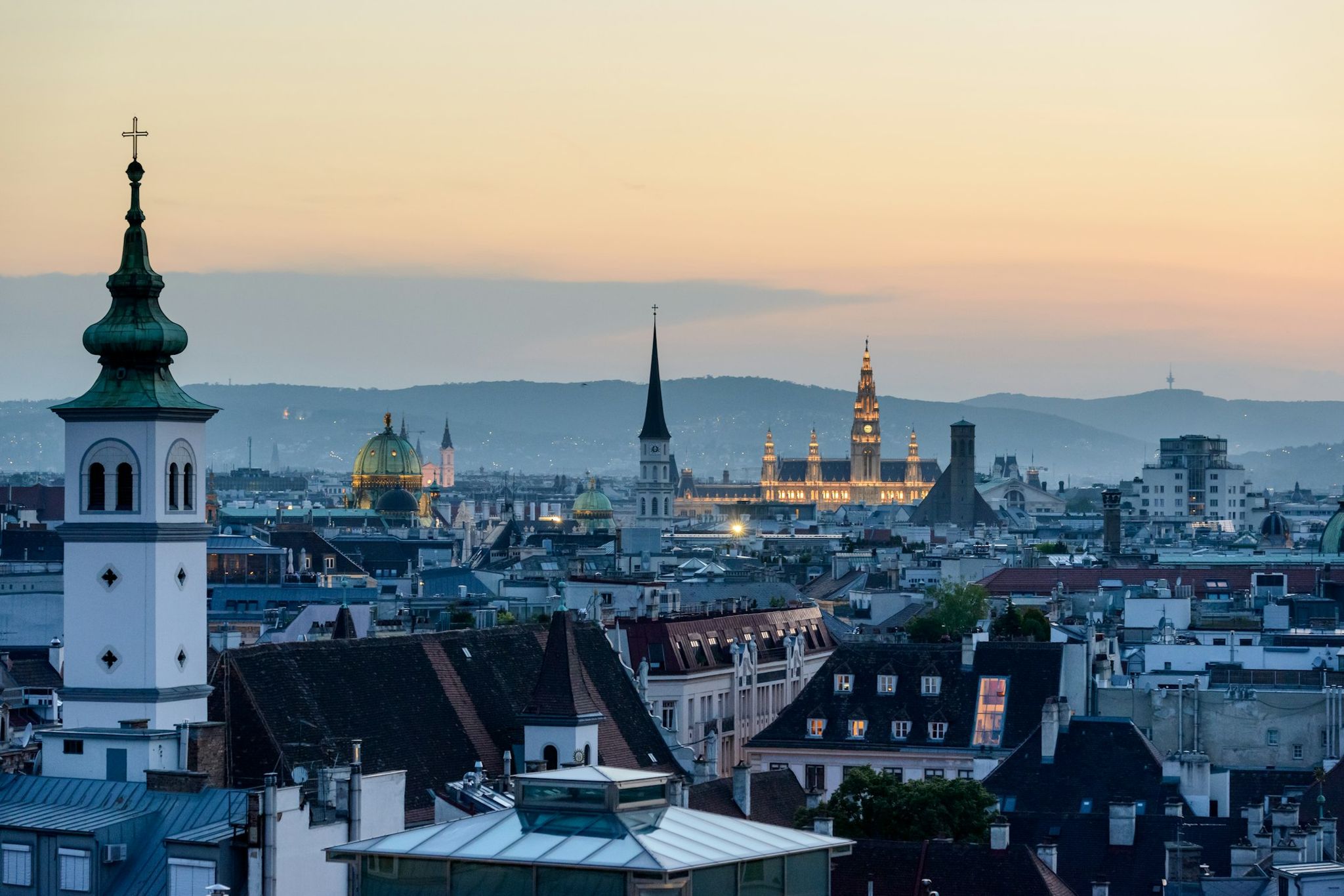
Vienna experiences a continental climate with distinct seasons characterized by warm summers and cold winters. The best time to visit Vienna is during the shoulder seasons of spring, from April to June, and fall, from September to October. During these months, the weather is pleasantly mild, and tourist crowds are thinner, allowing for a more immersive exploration of the city's treasures.
Spring and fall offer an ideal opportunity to explore Vienna's rich history and culture. Travelers can visit famous landmarks like Schonbrunn Palace, St. Stephen's Cathedral, and Belvedere Palace. They can also attend events like the Vienna Festival.
Best Time To Explore Salzburg

Salzburg, located in the alpine region, has a similar climate to Vienna but with slightly cooler temperatures. The best times to visit Salzburg are spring, from April to June, and fall, from September to October. During these months, the weather is mild and comfortable, ideal for discovering the city's rich cultural heritage.
Exploring Salzburg during these seasons unveils a treasure trove of historic landmarks, such as the imposing Hohensalzburg Fortress and the picturesque Mirabell Palace Gardens. Moreover, the city comes alive with the illustrious Salzburg Festival, held annually in July and August.
Best Time To Enjoy Tyrol
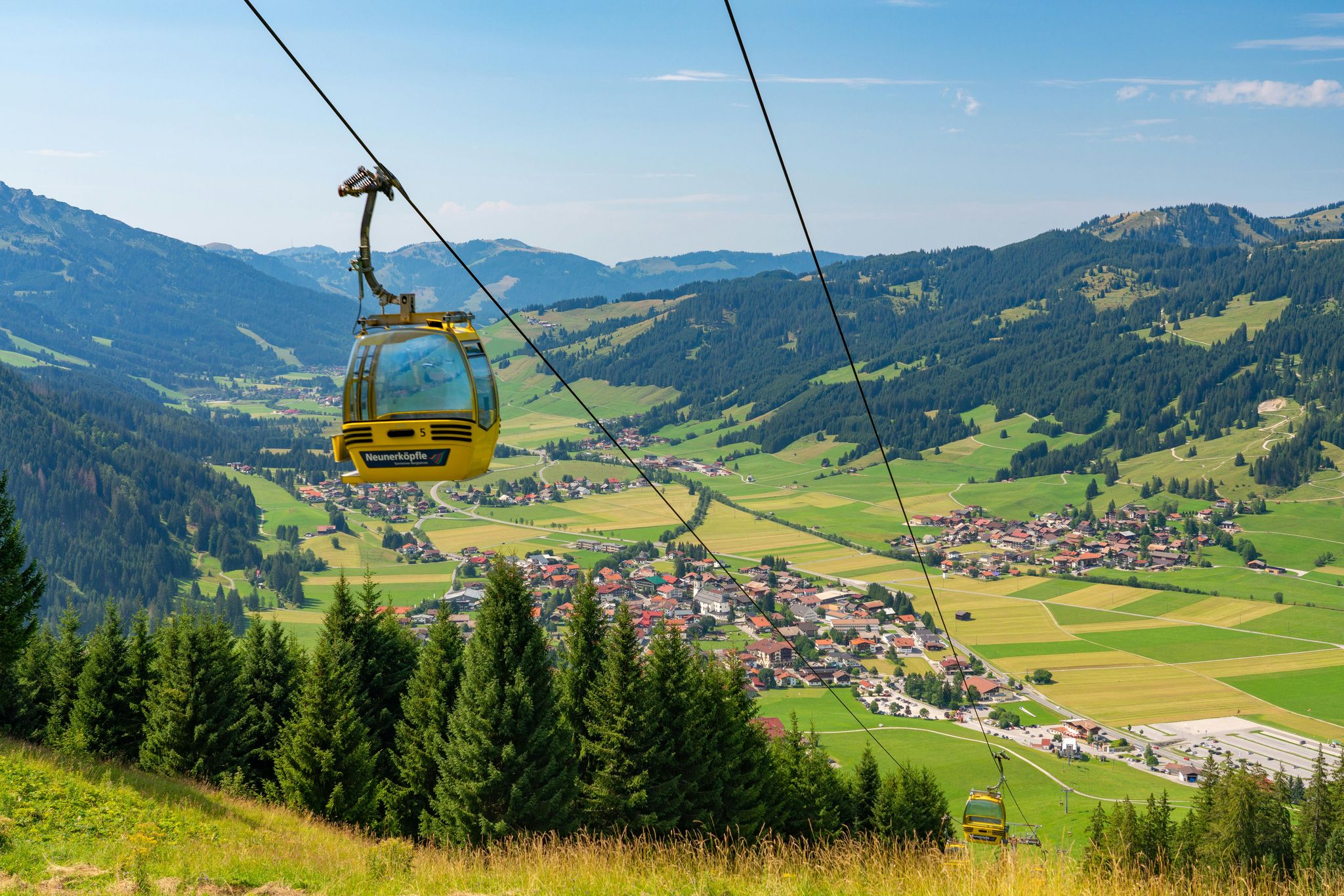
Tyrol, renowned for its rugged mountainous landscapes, has a varied climate featuring cool summers and cold winters. The best time to visit Austria to discover Tyrol depends on individual preferences.
During summer, from June to September, the warm temperatures and long daylight hours are perfect for activities like hiking, mountain biking, and climbing. There are many scenic trails to explore, such as the Stubai High Trail and the Zillertal Alps. Mountain biking enthusiasts can enjoy the extensive network of trails in areas like Solden and Kitzbuhel. Climbers can also find exciting challenges on the rock faces of the Otztal Alps or the limestone cliffs of the Wilder Kaiser.
In contrast, winter, from December to March, transforms the region into a snowy paradise. Skiing enthusiasts can enjoy the pristine slopes of St. Anton, Ischgl, and Kitzbuhel. Meanwhile, snowboarders can take on the terrain parks and freeride zones of Serfaus-Fiss-Ladis and Mayrhofen. Tyrol also offers opportunities for cross-country skiing, snowshoeing, and winter hiking, allowing visitors to immerse themselves in the enchanting snowy landscapes.
Best Months To Visit Carinthia
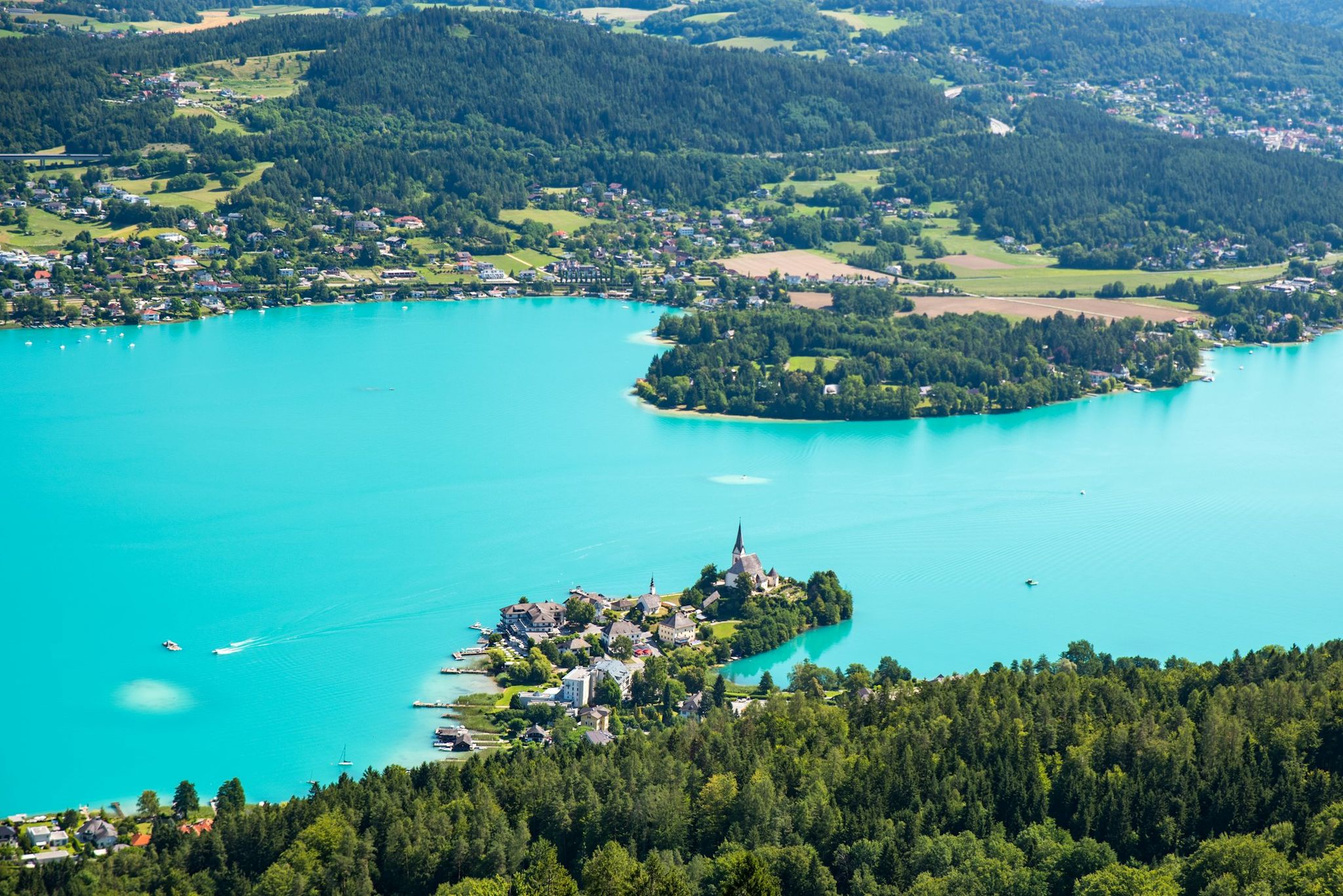
Carinthia, famed for its breathtaking lakes and mountains, offers a pleasant climate characterized by warm summers and chilly winters. The best time to visit Austria to explore this region is during the summer months, from June to August, and in the winter season, from December to February.
During summer, temperatures are perfect for swimming, boating, and hiking. Carinthia's abundance of lakes, such as Lake Worthersee and Lake Millstatt, provides refreshing waters for water sports enthusiasts to enjoy. In winter, the region transforms into a hub for skiing and snowboarding, with popular resorts like Nassfeld and Bad Kleinkirchheim attracting winter sports enthusiasts from far and wide.
Best Seasons To Visit Lower Austria

Lower Austria boasts a continental climate that features warm summers and cold winters. The best time to visit Lower Austria is during the shoulder seasons of spring, from April to June, and fall, from September to October. During these months, the weather is mild and pleasant for outdoor activities.
During spring, the region bursts into life with colorful blossoms and lush greenery. Visitors can visit the Wachau Valley's renowned vineyards and immerse themselves in the region's rich winemaking heritage. They can partake in wine tastings, guided tours of wine cellars, and scenic hikes through terraced vineyards.
In fall, the landscape transforms as the leaves change color, offering breathtaking views for leisurely walks and cycling excursions along the majestic Danube River. Additionally, this season provides an excellent opportunity to visit historic landmarks such as Melk Abbey. Visitors can marvel at the abbey’s Baroque architecture and explore its fascinating exhibitions and gardens.
Ideal Time To Visit Upper Austria
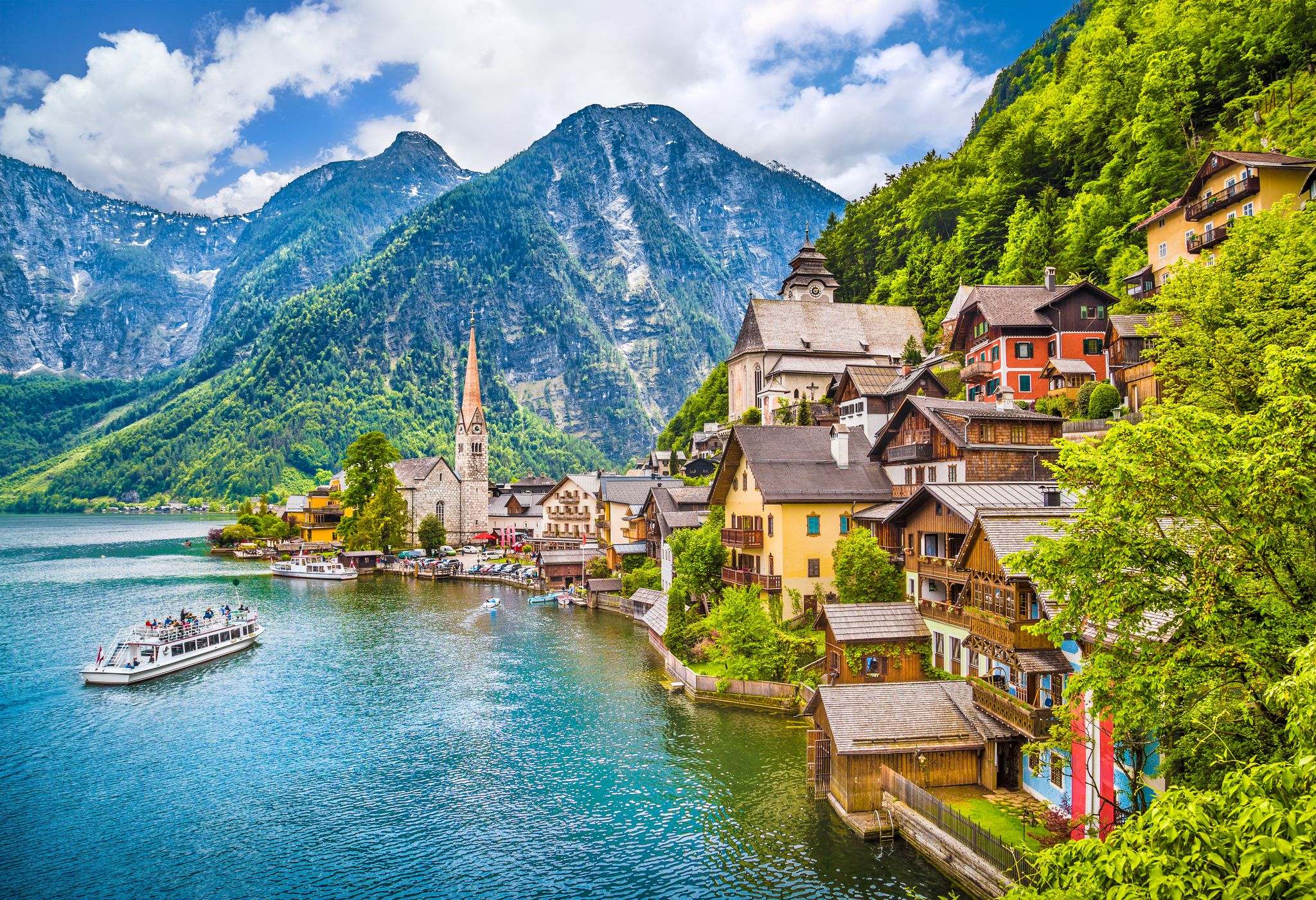
Upper Austria's climate is similar to Lower Austria, experiencing warm summers and cold winters. Spring, from April to June, and summer, from July to September, are the best times to explore this enchanting region. During these months, the weather is perfect for outdoor adventures, such as hiking in the scenic Salzkammergut region.
Travelers can also go cycling along the picturesque Danube Cycle Path and discover charming towns and villages like Hallstatt, Gmunden, and St. Wolfgang.
As the temperatures begin to cool in autumn, from September to November, Upper Austria undergoes a breathtaking transformation. Its forests and vineyards burst into shades of red, orange, and gold. During this time, you can enjoy leisurely walks among bright foliage, scenic drives through the rolling hills, and wine-tasting experiences in renowned local wine regions like the Muhlviertel.
Best Time To Visit Styria
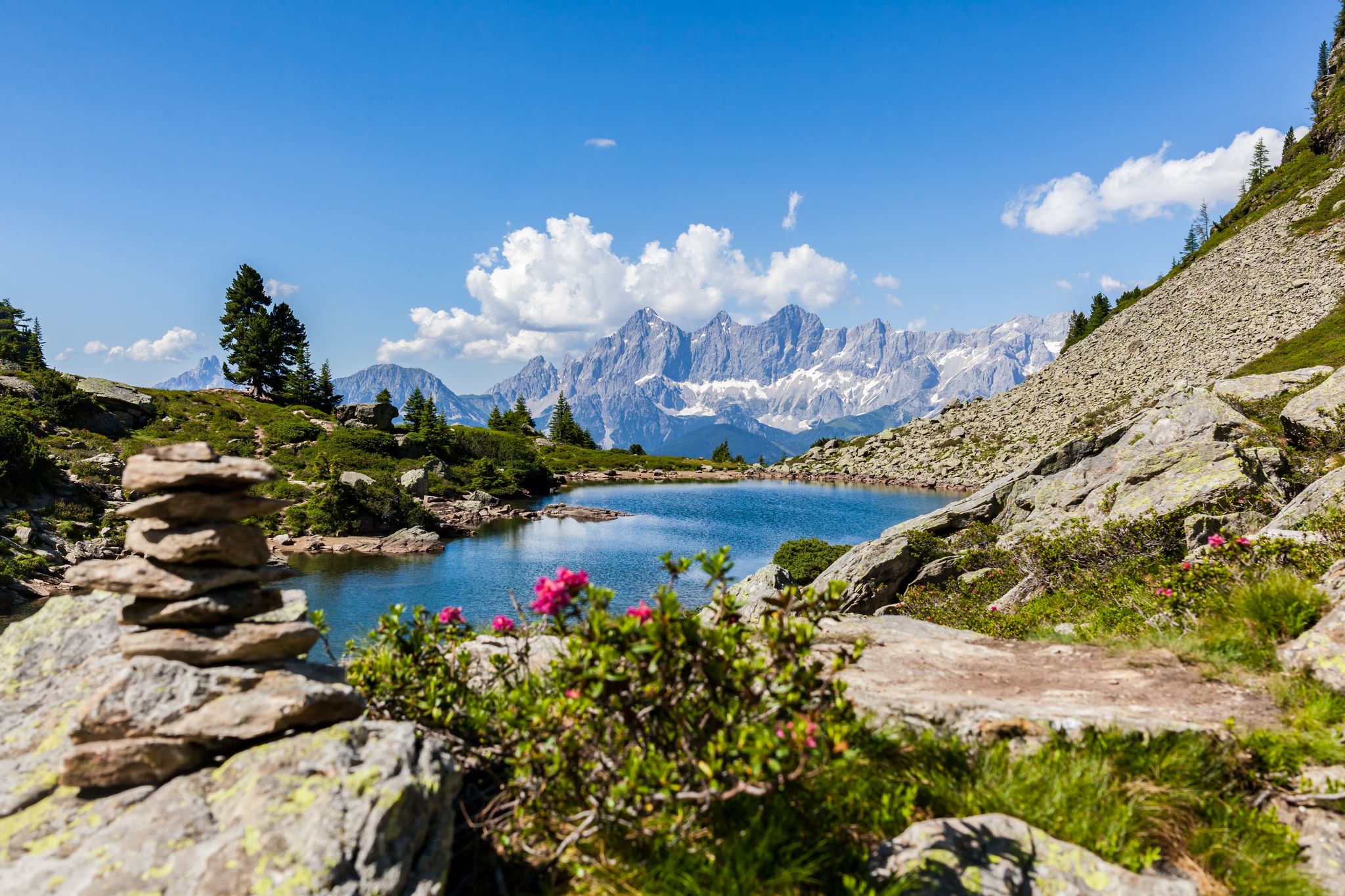
Styria's climate transitions from alpine in the northwest to Mediterranean in the southeast, offering a wealth of experiences throughout the seasons. Spring, from April to June, or fall, from September to October, is the best time to visit Austria for outdoor adventures in Styria. Travelers can go hiking in Gesause National Park, cycling along the Murradweg, and wine tasting in South Styria.
Summer, from June to August, brings warm temperatures, ideal for discovering Styria's cultural treasures. Visitors can wander Graz's medieval streets or explore the stunning Riegersburg Castle. They can also enjoy culinary festivals like the Schlossbergfest in Graz or the Genussfestival in Bad Radkersburg.
During winter, from December to February, the region transforms into a winter wonderland, attracting snow sports enthusiasts. Skiers and snowboarders can carve through the slopes of Schladming's 4-Mountain Ski Area or enjoy family-friendly skiing at the Kreischberg resort. Cross-country skiing, snowshoeing, ice-skating, and tobogganing are popular too, especially in the Dachstein region.
Best Time To Go to Burgenland

Burgenland also enjoys a continental climate with warm summers and cold winters. The best time to visit Austria to explore this region is during the grape harvest season in September and October. This period sees the vineyards in places like the Eisenberg region bustling with activity. Visitors can immerse themselves in wine tastings, vineyard tours, and culinary events celebrating the harvest.
Furthermore, the mild weather of spring, from April to June, and fall, from September to October, makes it ideal for exploring Burgenland's picturesque villages and cultural sites. Visitors can enjoy leisurely walks through quaint towns like Rust and Eisenstadt or uncover the region's rich history at landmarks such as Esterhazy Palace and Forchtenstein Castle.
Best Time To Explore Vorarlberg
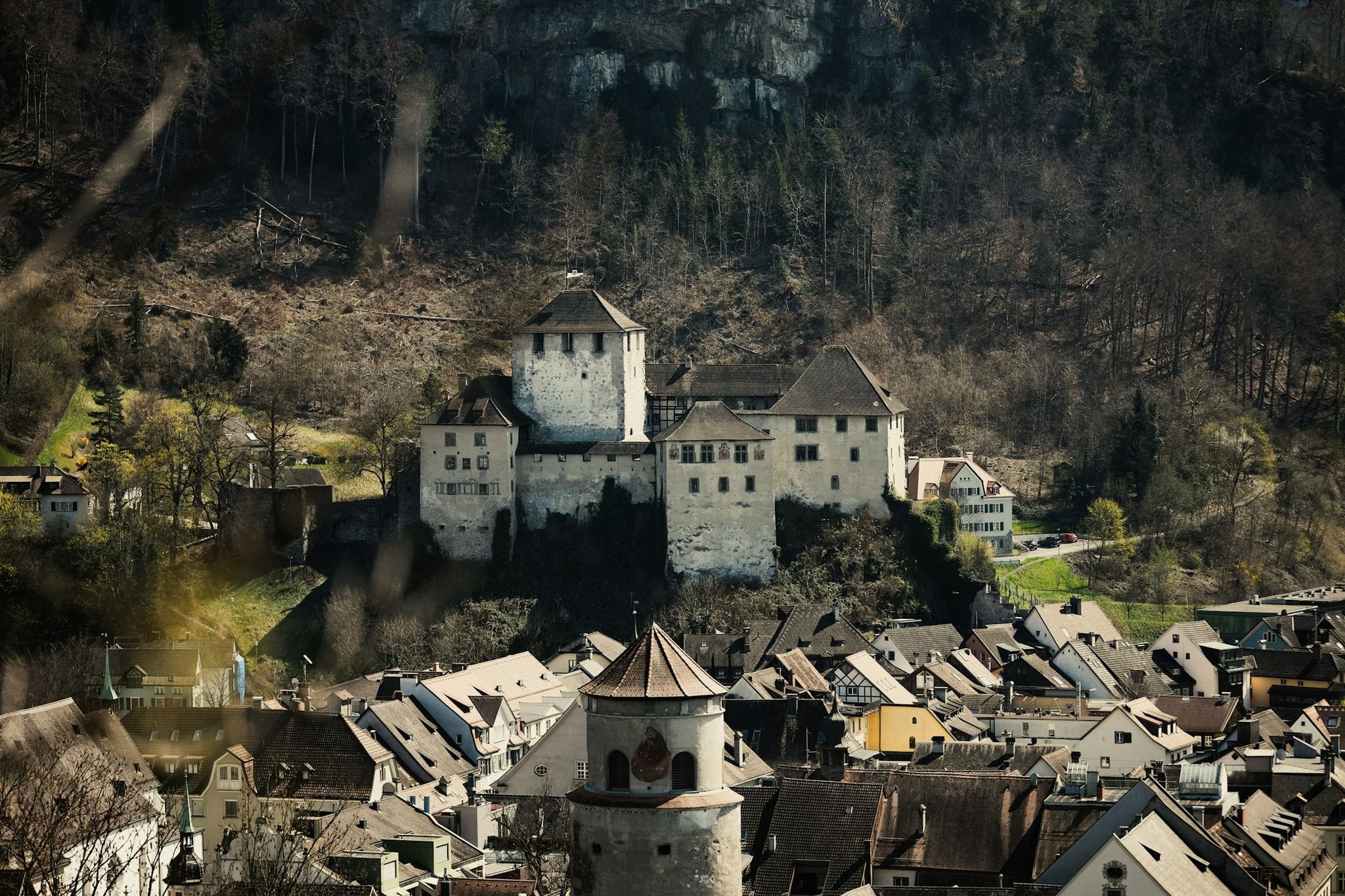
Vorarlberg, situated in the westernmost region, has a mountainous climate characterized by cool summers and cold winters. The best time to visit Austria and explore the region is during the summer months, from June to September, and winter, from December to February.
Must-visit towns in Vorarlberg include Bregenz, known for its year-round cultural experiences and the famous Bregenz Festival. Dornbirn stands out with its buzzing market square, museums, and nearby hiking trails. Additionally, Feldkirch offers medieval charm with its historic Schattenburg Castle.
During summer, the region's mild weather makes it ideal for outdoor adventures. Travelers can hike in the picturesque Arlberg region, mountain bike along the trails of Montafon, and paraglide over the stunning landscapes of Bregenzerwald.
In winter, Vorarlberg becomes a paradise for snow sports enthusiasts. Visitors can enjoy skiing and snowboarding in the renowned resorts of Lech and Zurs or explore the cross-country skiing trails in the snowy valleys of Kleinwalsertal.
The Ultimate Question: When Is the Best Time To Visit Austria?
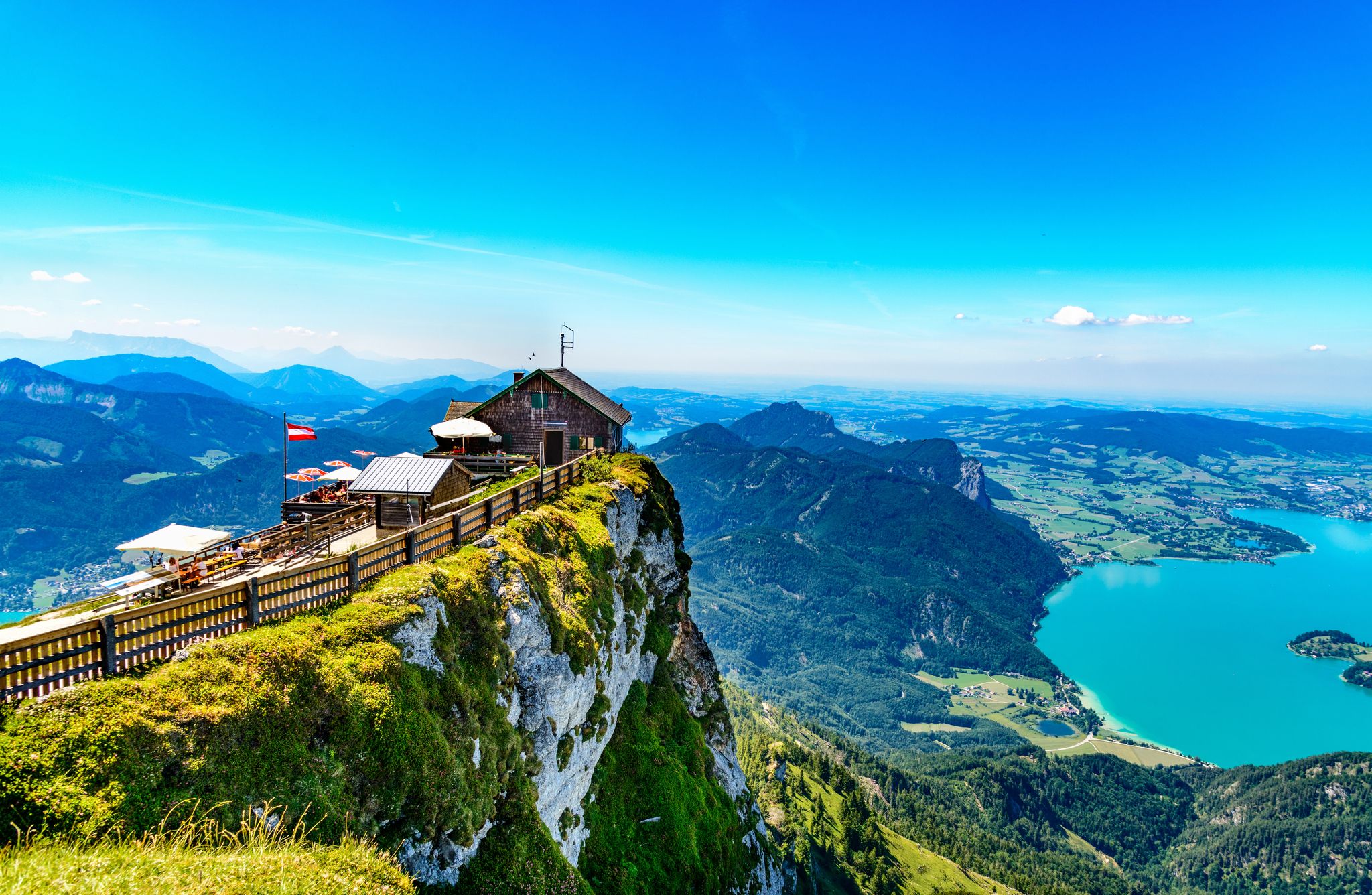
There is no one-size-fits-all answer to the best time to visit Austria. Each season offers its own set of advantages and considerations. It's essential to consider each season's unique characteristics and activities to determine the best time to go to Austria. Here's a rundown:
Spring and fall are transitional seasons from March to May and September to November. These months are the best time to visit Austria for pleasant weather and outdoor activities. Enjoy hiking, cycling, and walking in cities with fewer crowds.
Spring in Austria showcases colorful sceneries with blooming flowers and trees. However, unpredictable weather patterns and occasional rain showers can be a downside. Meanwhile, fall in Austria paints the landscape with golden foliage.
Summer in Austria, from June to August, ensures bustling activity and exciting festivals. It allows optimal conditions for outdoor adventures like hiking, swimming, and sightseeing.
The warm season also hosts many cultural events like the Salzburg Festival. However, visitors should be prepared for higher prices and larger crowds at popular attractions.
December to February marks winter in Austria. It's ideal for skiing, snowboarding, and the time for festive celebrations.
Winter includes picturesque snow-covered landscapes and a magical ambiance, especially during Christmas markets. However, visitors should prepare for cold weather and snowy conditions. This can limit outdoor activities and require appropriate clothing and equipment.
When planning the best time to visit Austria, consider the weather, crowd levels, and seasonal activities to ensure a fulfilling experience. Ultimately, when to visit depends entirely on your preferences, interests, and travel style.
To make your experience more enjoyable, read this article on the top things to do in Austria. Learn about the top activities in this beautiful country, from exploring historical Vienna to enjoying its "Sound of Music" filming locations.
FAQs About the Best Time To Visit Austria

What are the best places to visit in Austria during winter?
The best places to visit in Austria during winter, from December to February, are its ski resorts and top cities. Check out St. Anton, Kitzbuhel, and Ischgl, where you can enjoy world-class skiing and snowboarding.
If you plan to visit Austria to spend Christmas, Vienna and Salzburg are the best cities to visit. In December, these cities are filled with enchanting Christmas markets, festive decorations, and seasonal events.
Which are the top destinations to explore in Austria during summer?
In summer, outdoor enthusiasts can enjoy hiking in the Alps, biking in Tyrol, and paragliding over valleys. Lakes like Wolfgangsee and Hallstatter See are perfect for swimming and water sports. Cities like Vienna, Salzburg, and Innsbruck host cultural events such as concerts and festivals.
What defines the high season in Austria?
The high season in Austria typically includes summer, from June to August, and winter, from December to February. During these periods, popular sites experience an influx of visitors. Meanwhile, prices for accommodations, flights, and activities are often higher. It's advisable to book accommodations and activities well in advance to secure the best options at favorable rates.
When is the cheapest time to visit Austria?
The cheapest time to visit Austria is typically during the shoulder seasons of spring, from April to May, and fall, from September to October. During these times, accommodation prices are lower, and tourist crowds are thinner. Additionally, late fall, around November, or early spring, around March, is the best time to visit Austria for budget-conscious travelers. During these months, there may be discounted rates on accommodations and flights to Austria.
What is the best weather to experience when visiting Austria?
The best time to visit Austria for favorable weather is during spring (April to June) and fall (September to October). These seasons offer mild temperatures and less rainfall compared to summer. Spring brings blooming flowers and lush greenery, while fall offers colorful foliage and harvest festivals, creating a picturesque and enjoyable environment for visitors.
Which month is typically the hottest in Austria?
July is typically the hottest month in Austria, with temperatures often soaring up to 86 F (30 C), especially in lower-altitude areas. This period is considered the best time to visit Austria to enjoy swimming in lakes like Wolfgangsee, engage in outdoor activities in Tyrol, and explore the urban landscapes of Vienna and Salzburg.
Which month is the coldest in Austria?
January emerges as the coldest month, often dipping below freezing, particularly in the alpine regions. This is the best time to visit Austria for winter sports enthusiasts, with ski resorts like St. Anton, Kitzbuhel, and Schladming boasting exceptional snow conditions for skiing and snowboarding.
During which months does it usually snow in Austria?
Snowfall in Austria is common from December to February, especially in the alpine regions. This period is considered the best time to visit Austria for winter sports enthusiasts. Ski resorts like Zell am See-Kaprun and Ischgl open their slopes, providing prime conditions for skiing, snowboarding, and other winter sports.
When is the best time to go skiing in Austria?
For an unforgettable skiing experience, the best time to visit Austria is between January and March. This window typically ensures prime snow conditions and fully operational ski resorts. December also presents fantastic skiing opportunities, especially amid the festive holiday season.
Is Austria better to visit in summer or winter?
The best time to visit Austria depends on your interests and preferences. Summer is ideal for outdoor activities like hiking, swimming, and sightseeing, as well as cultural events and festivals. Winter, on the other hand, offers opportunities for skiing, snowboarding, and festive celebrations such as Christmas markets and traditional Advent events.
